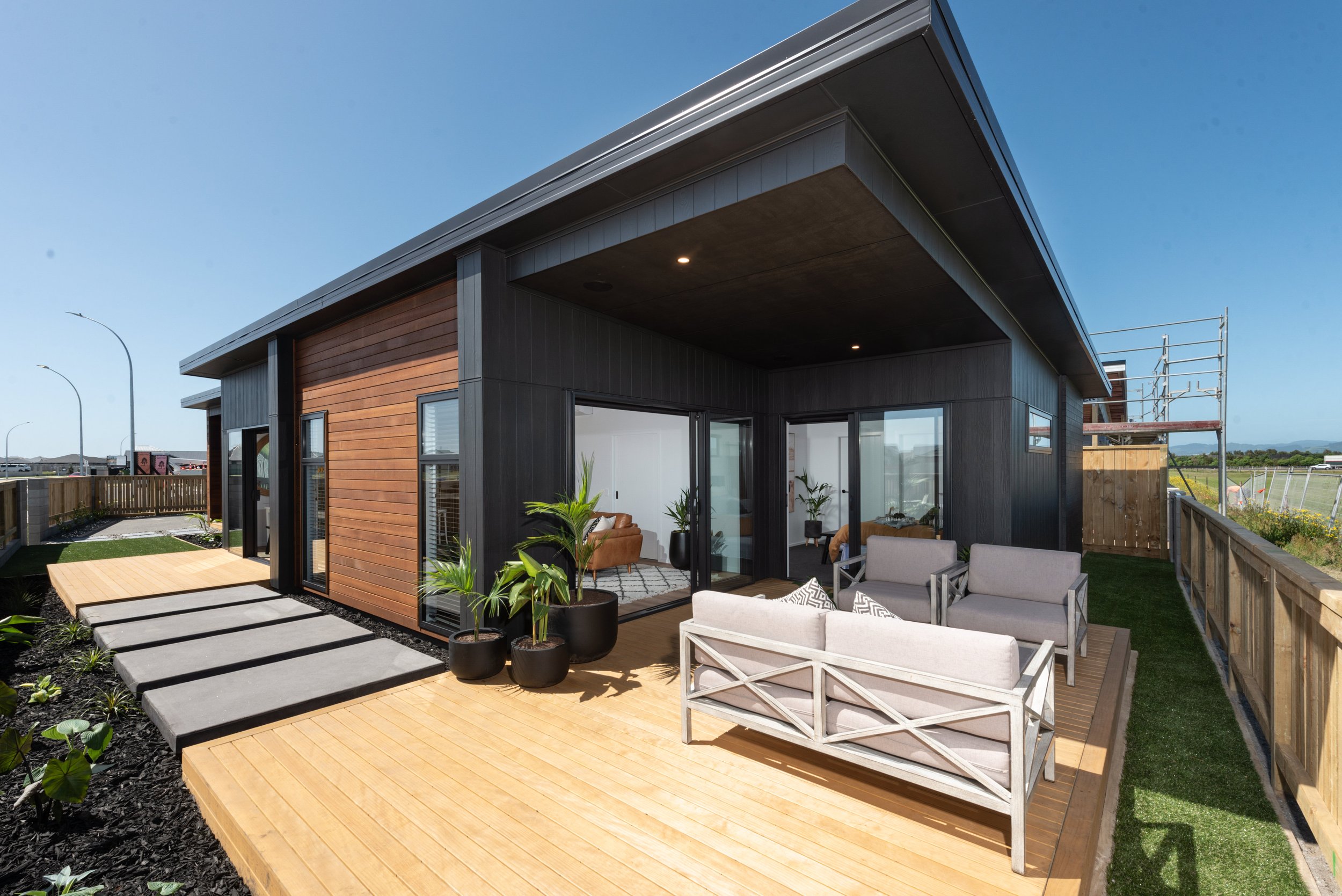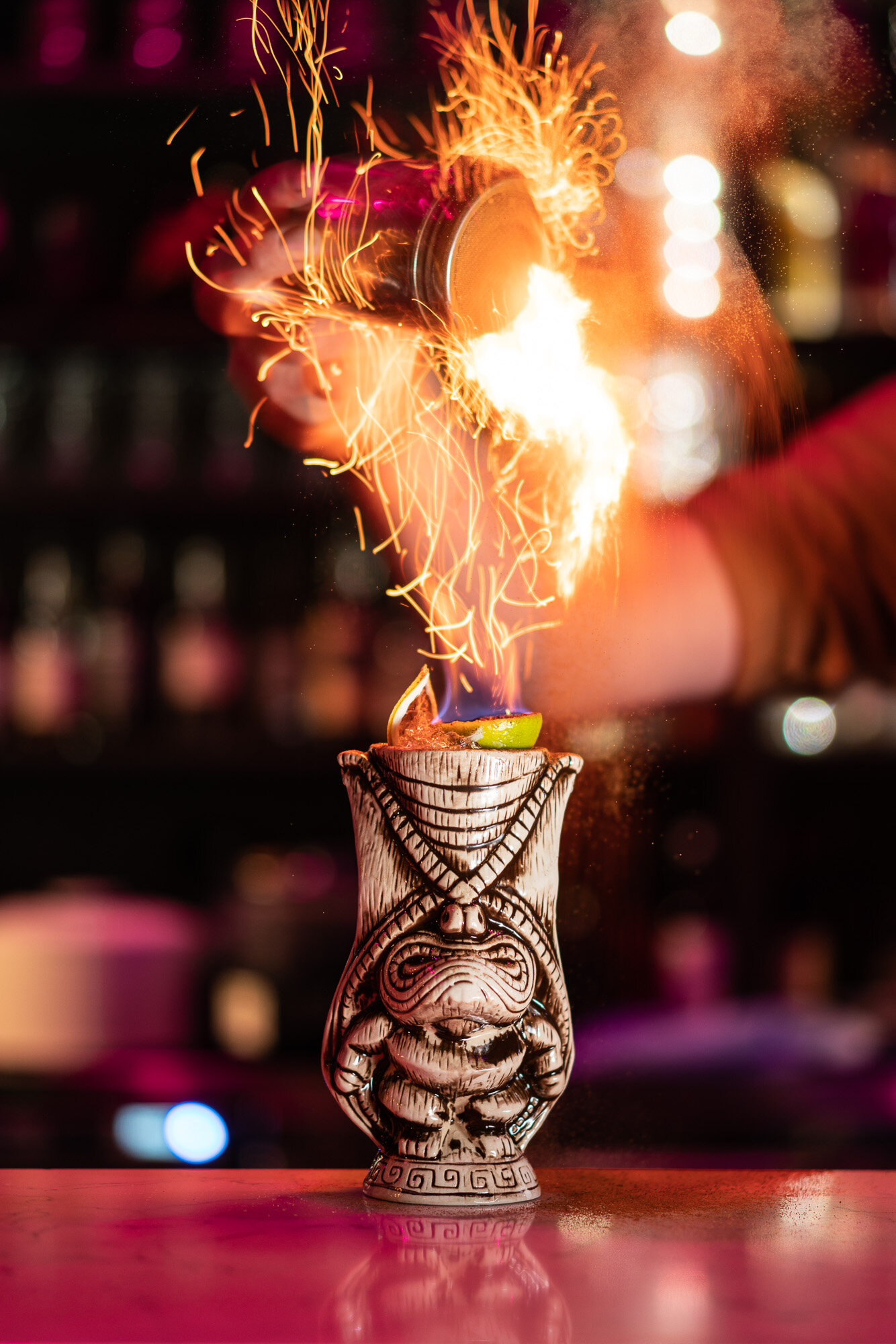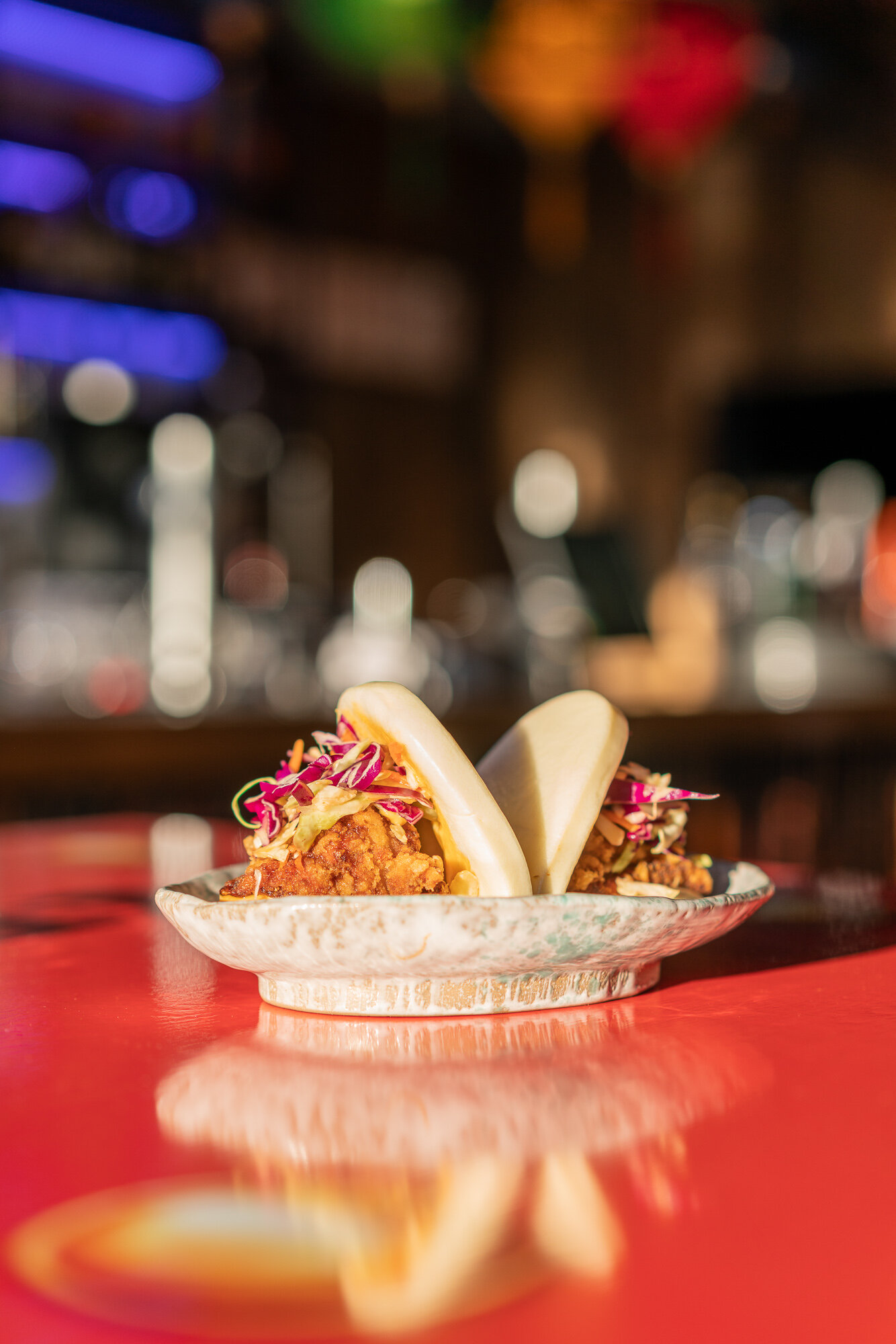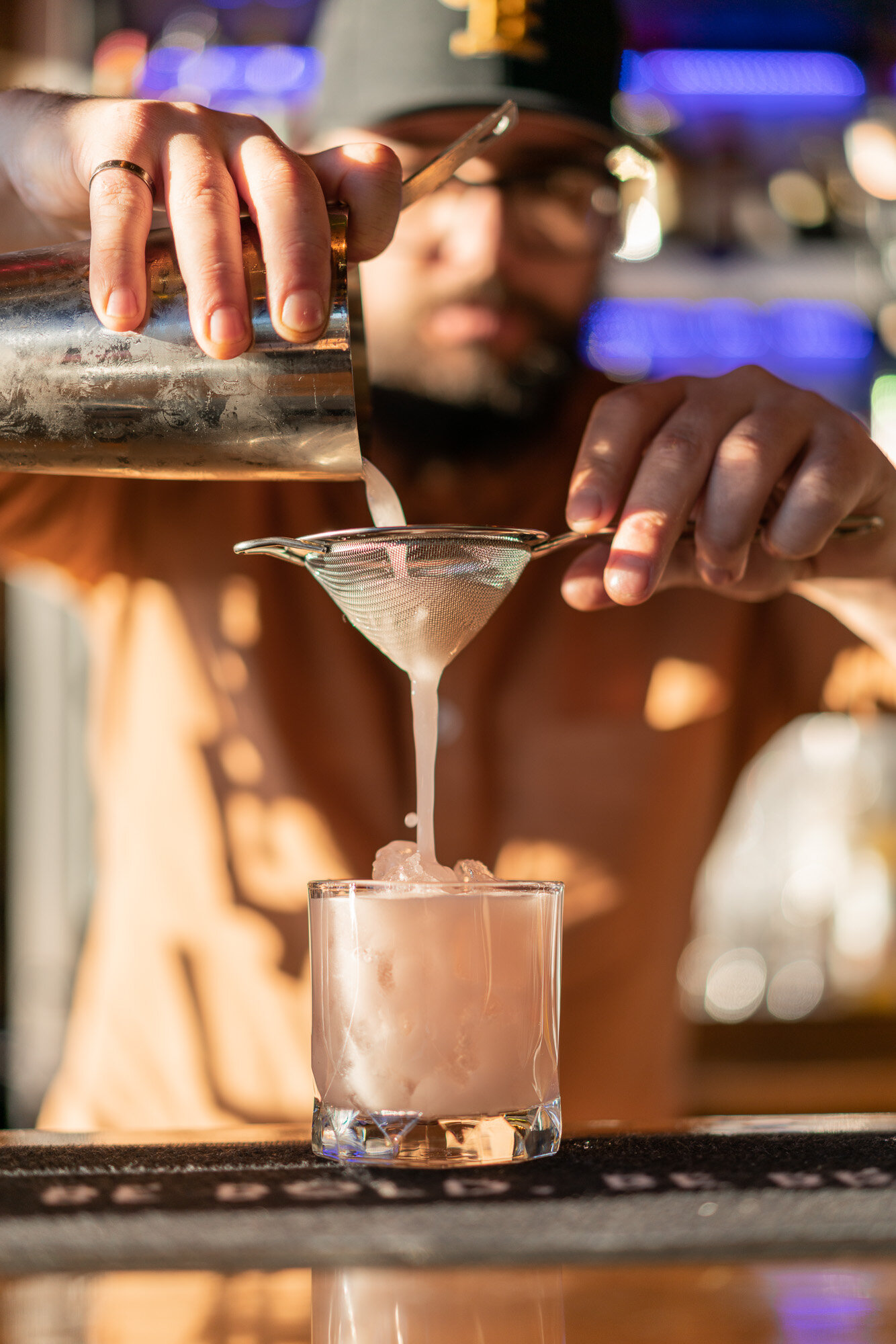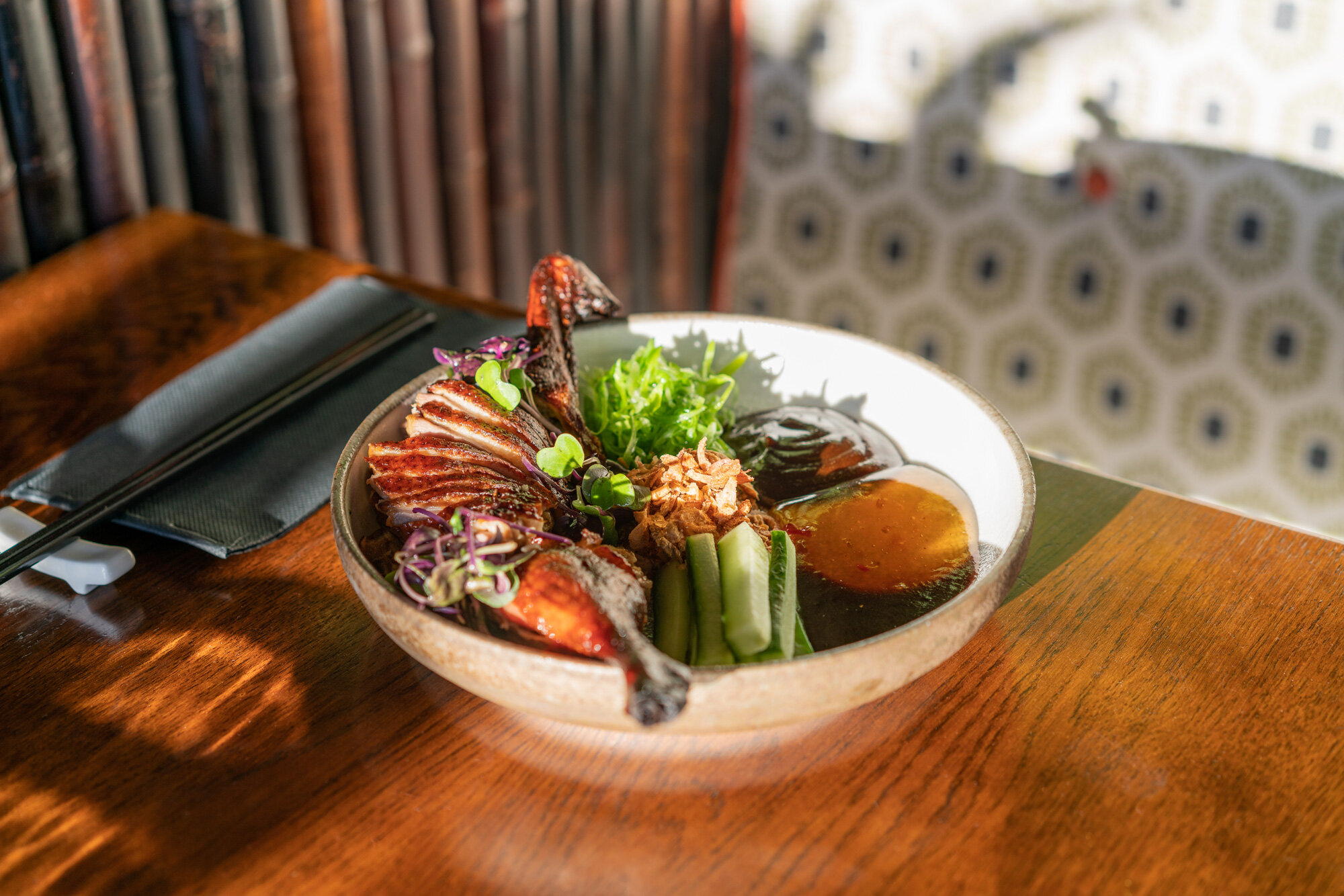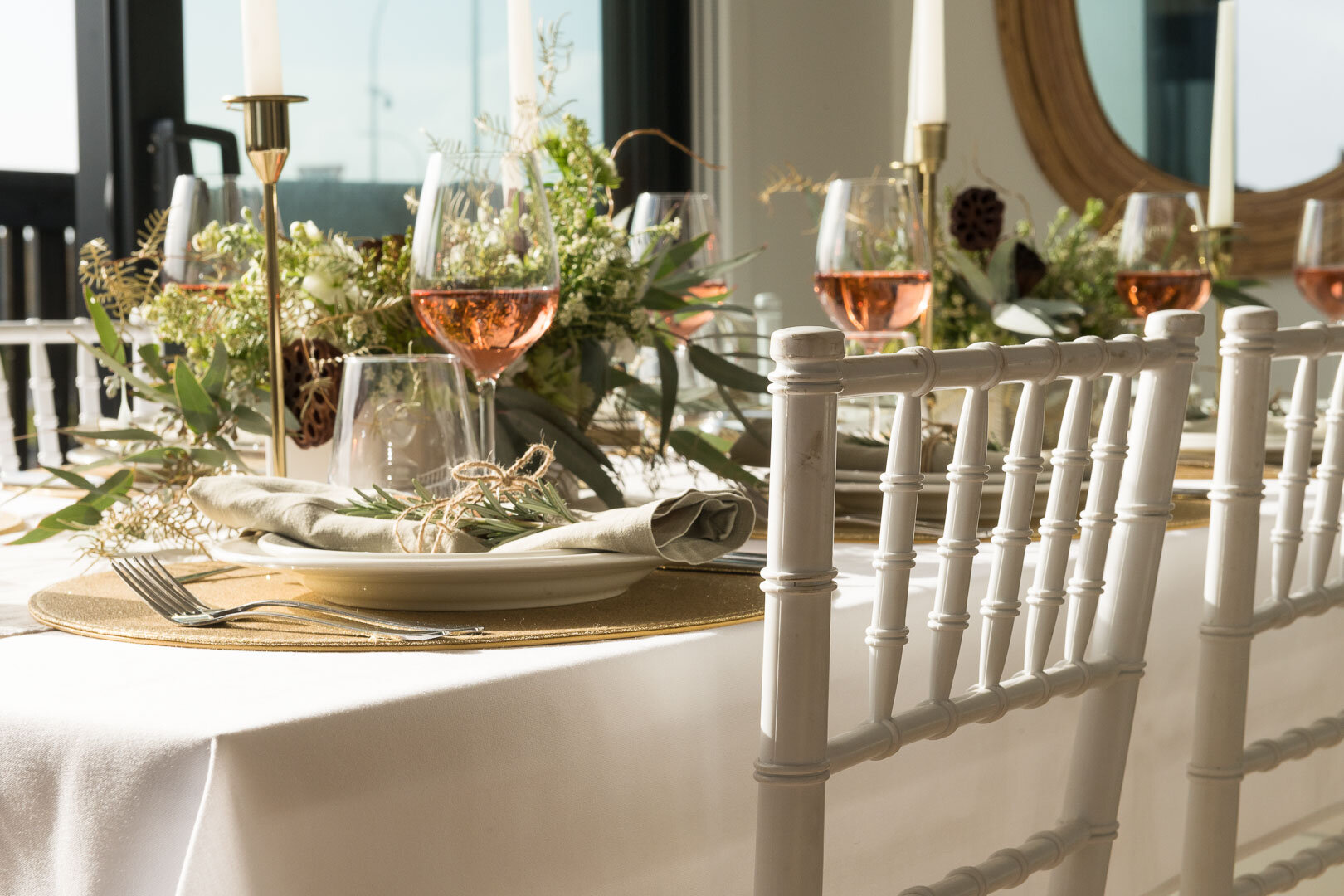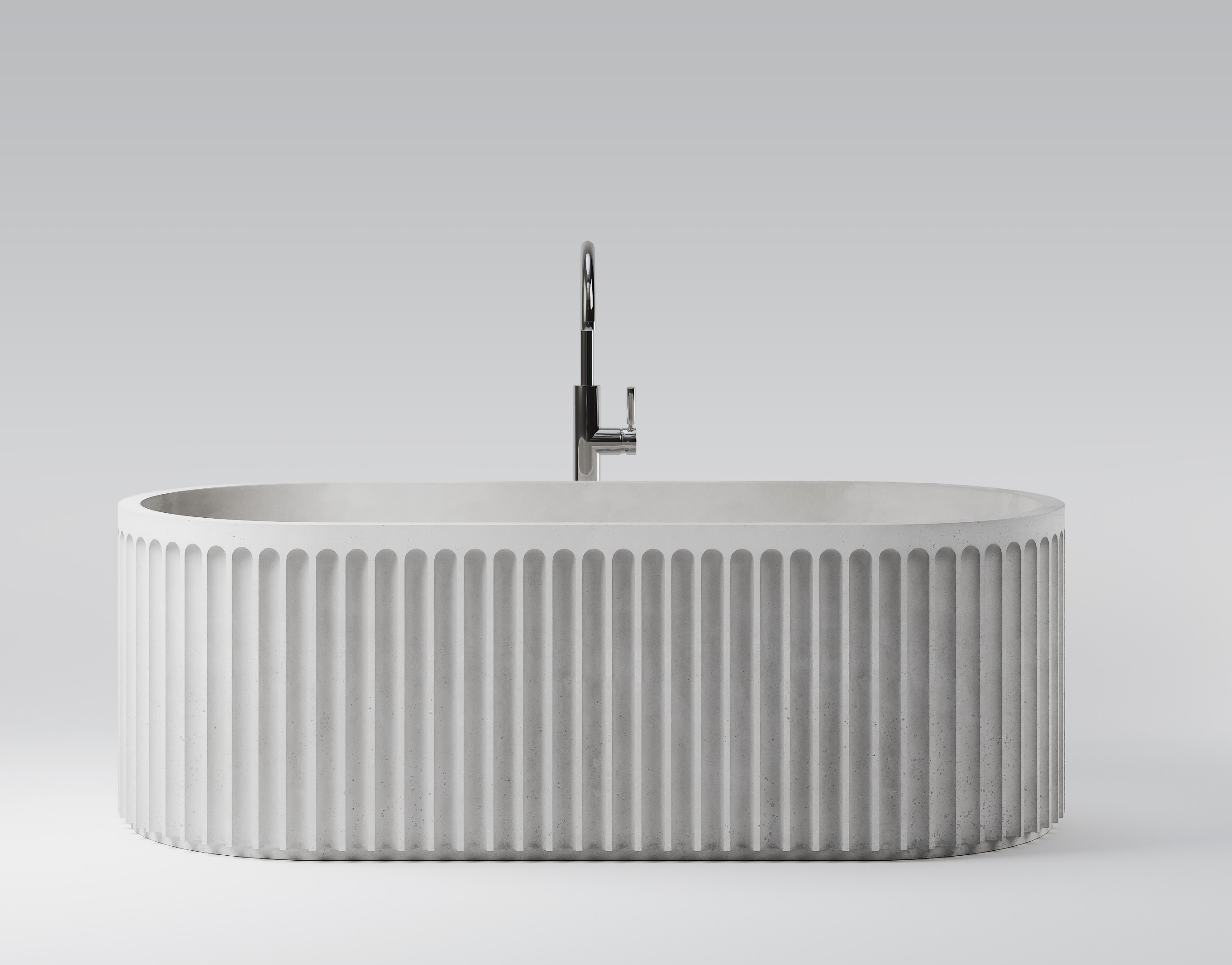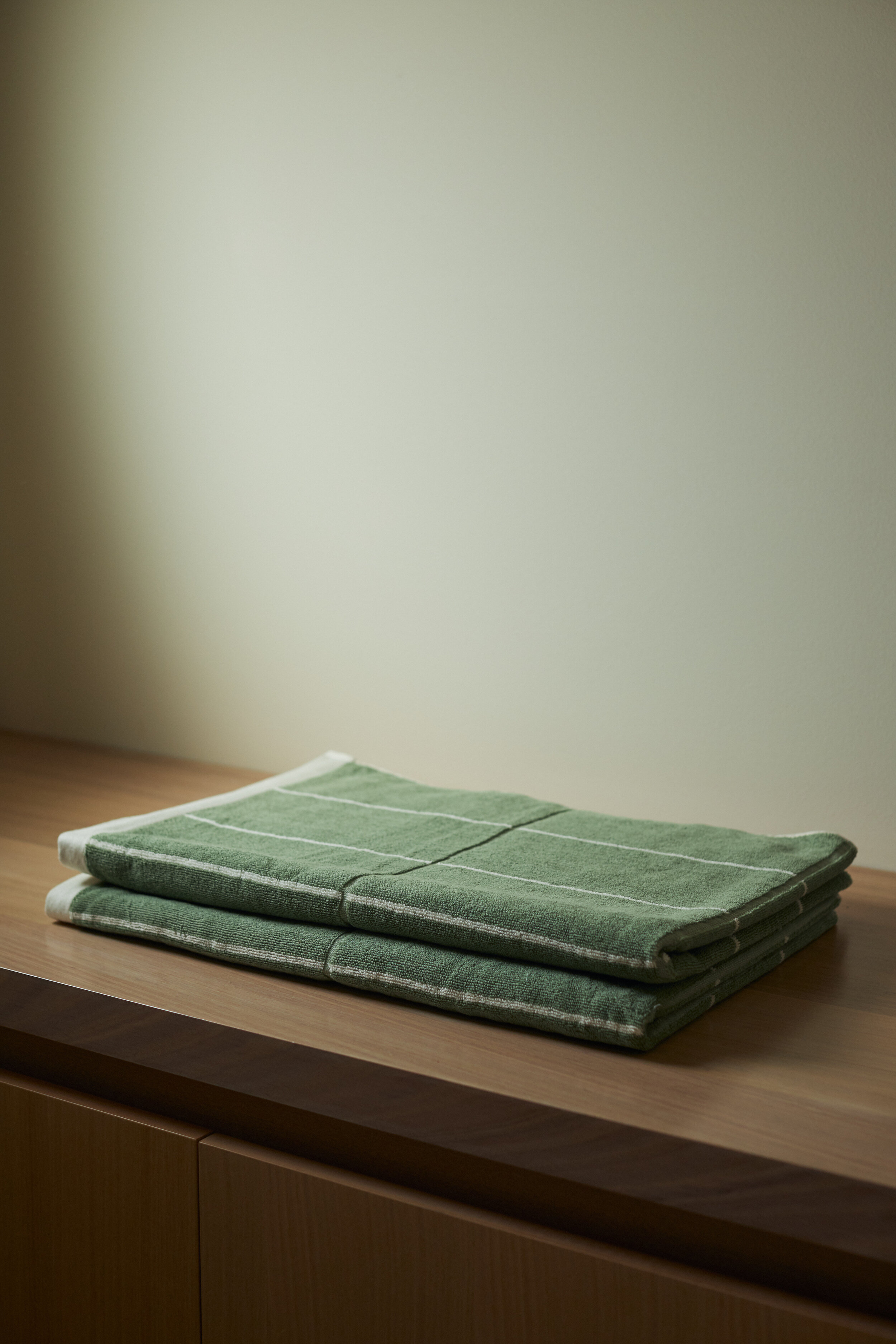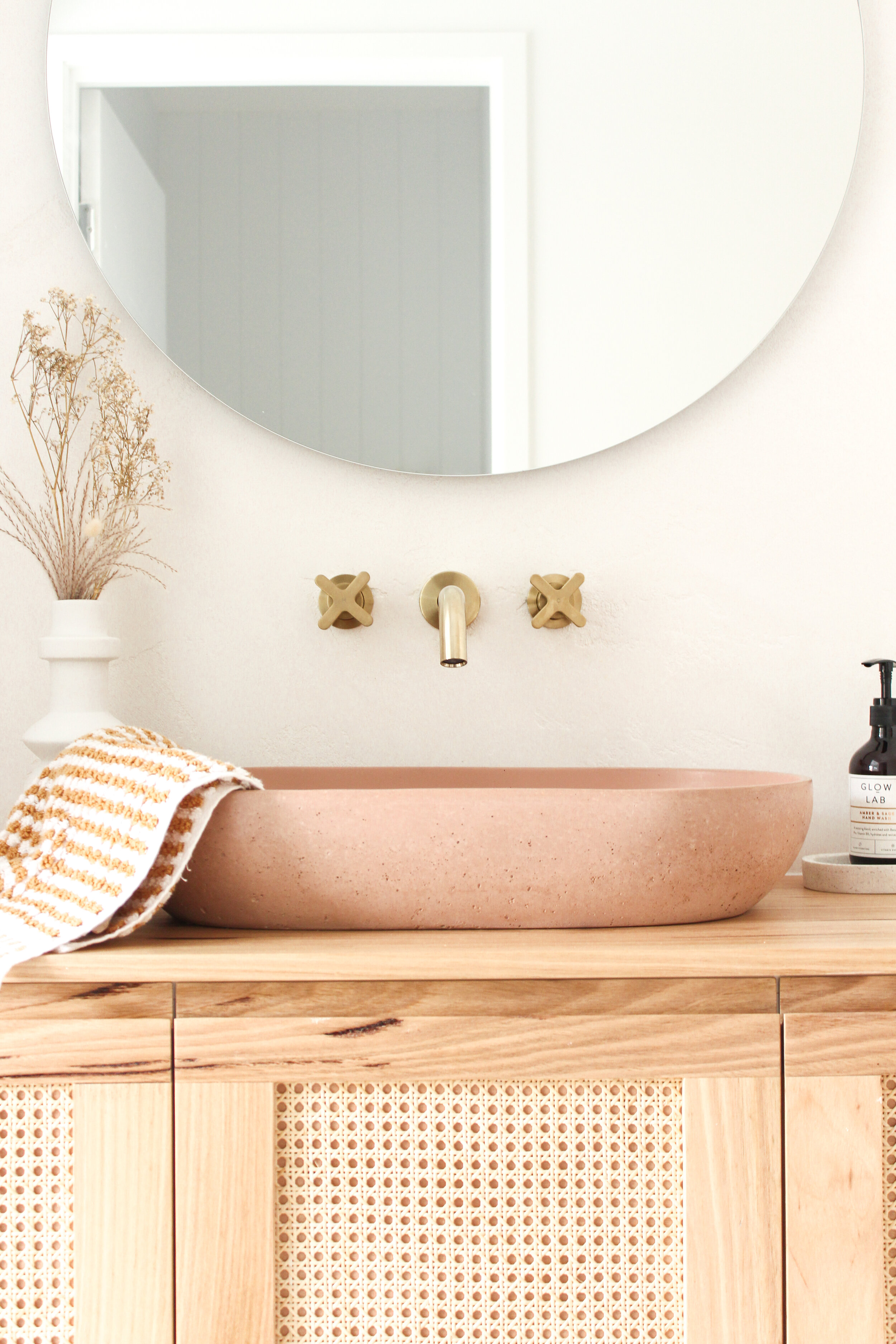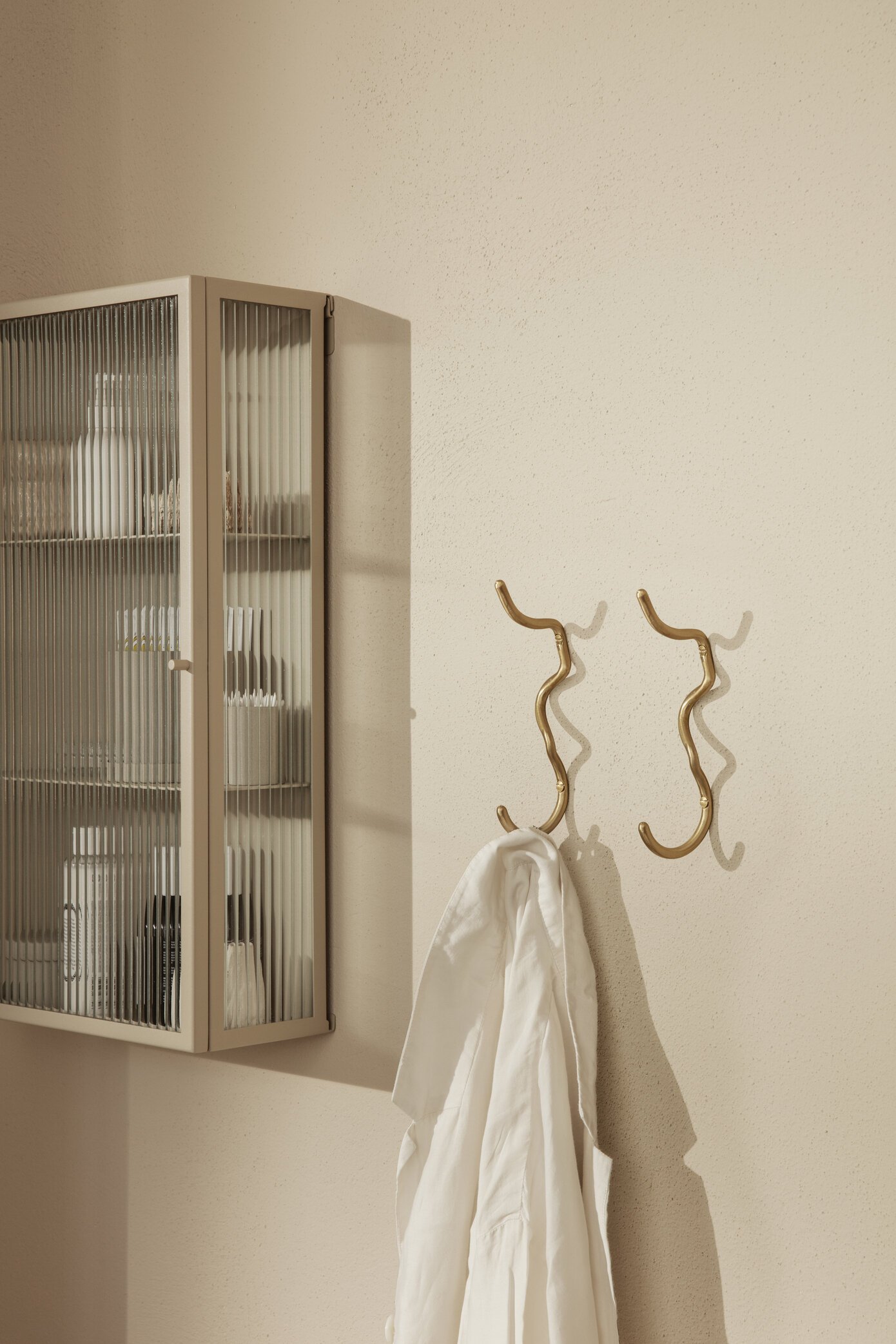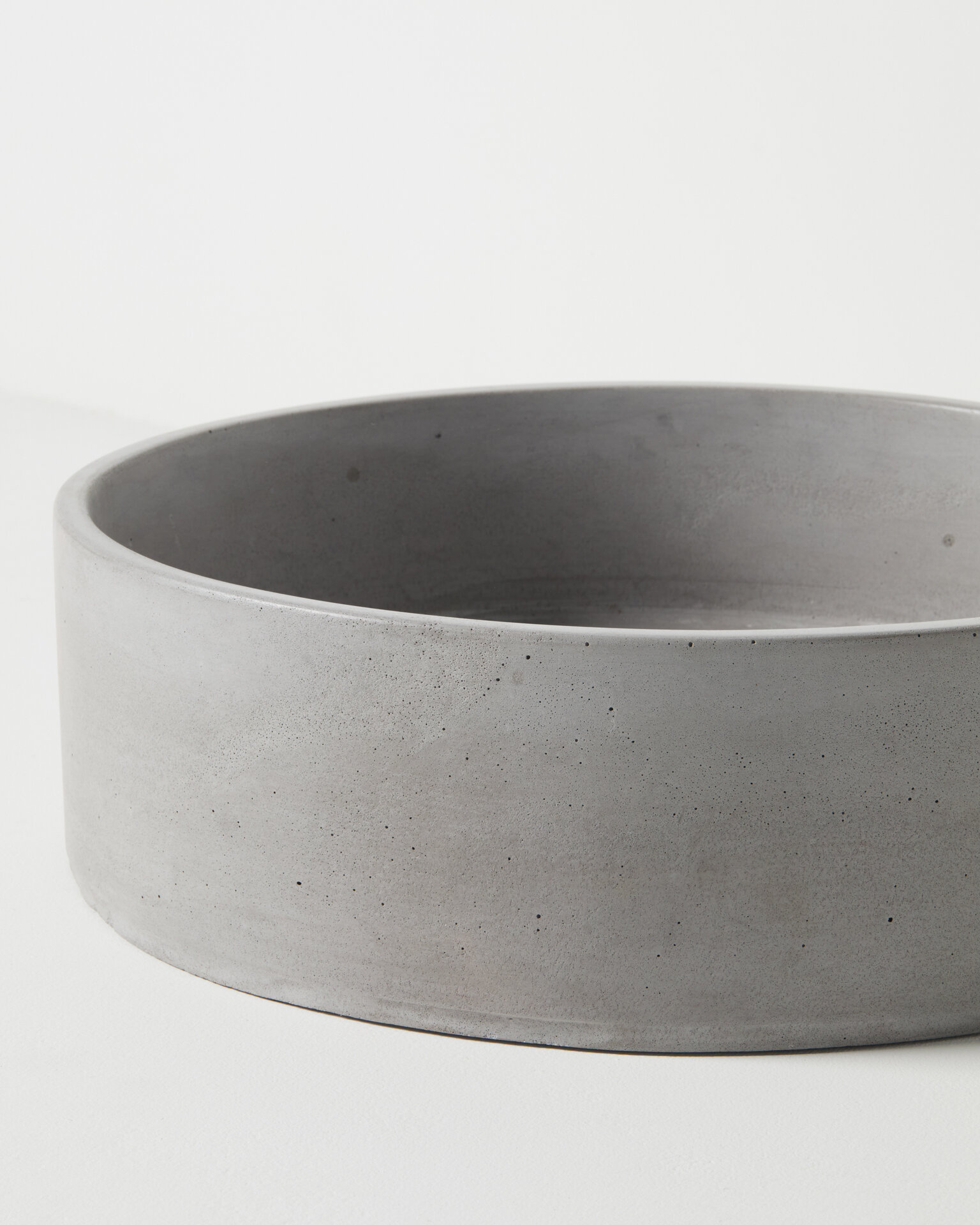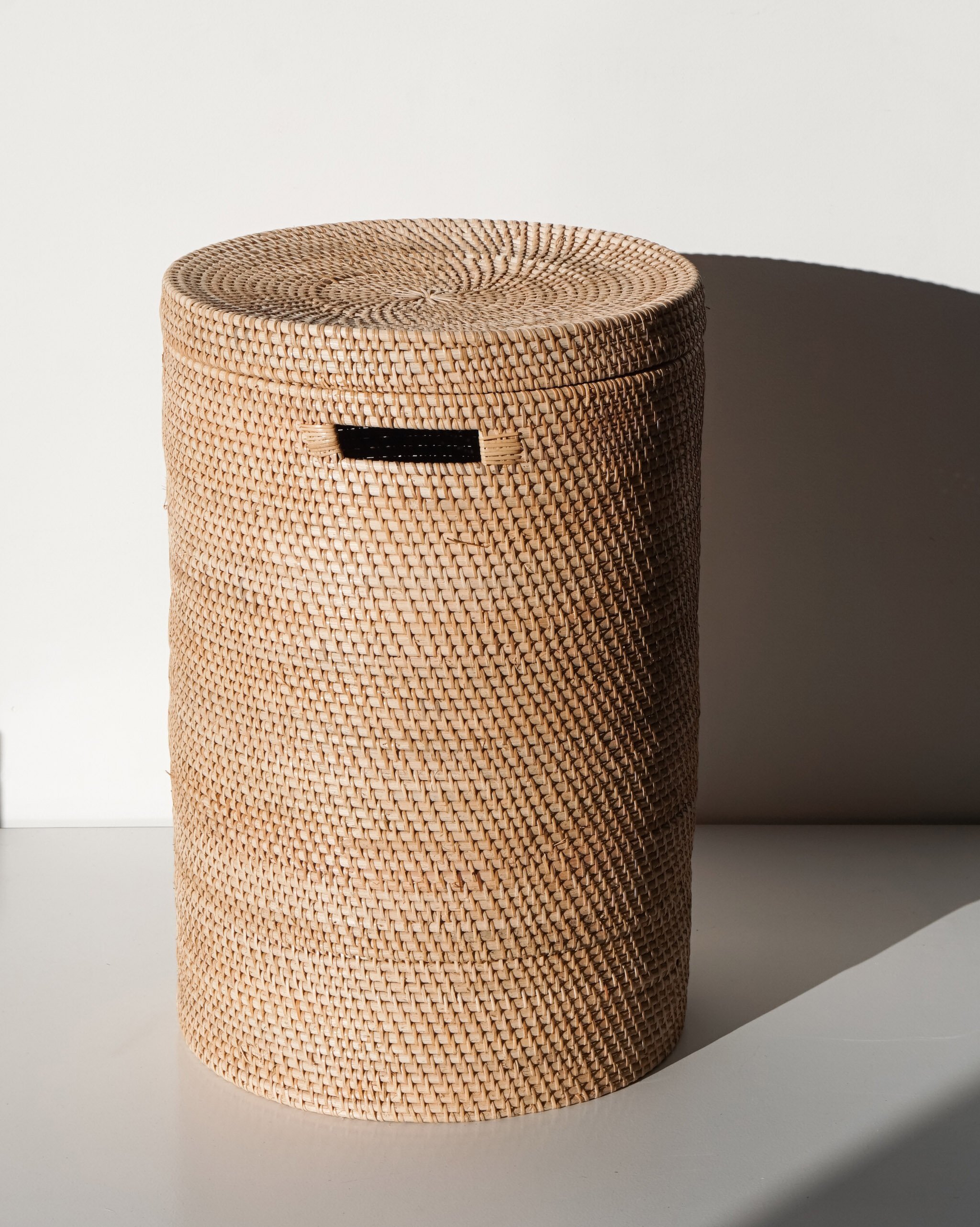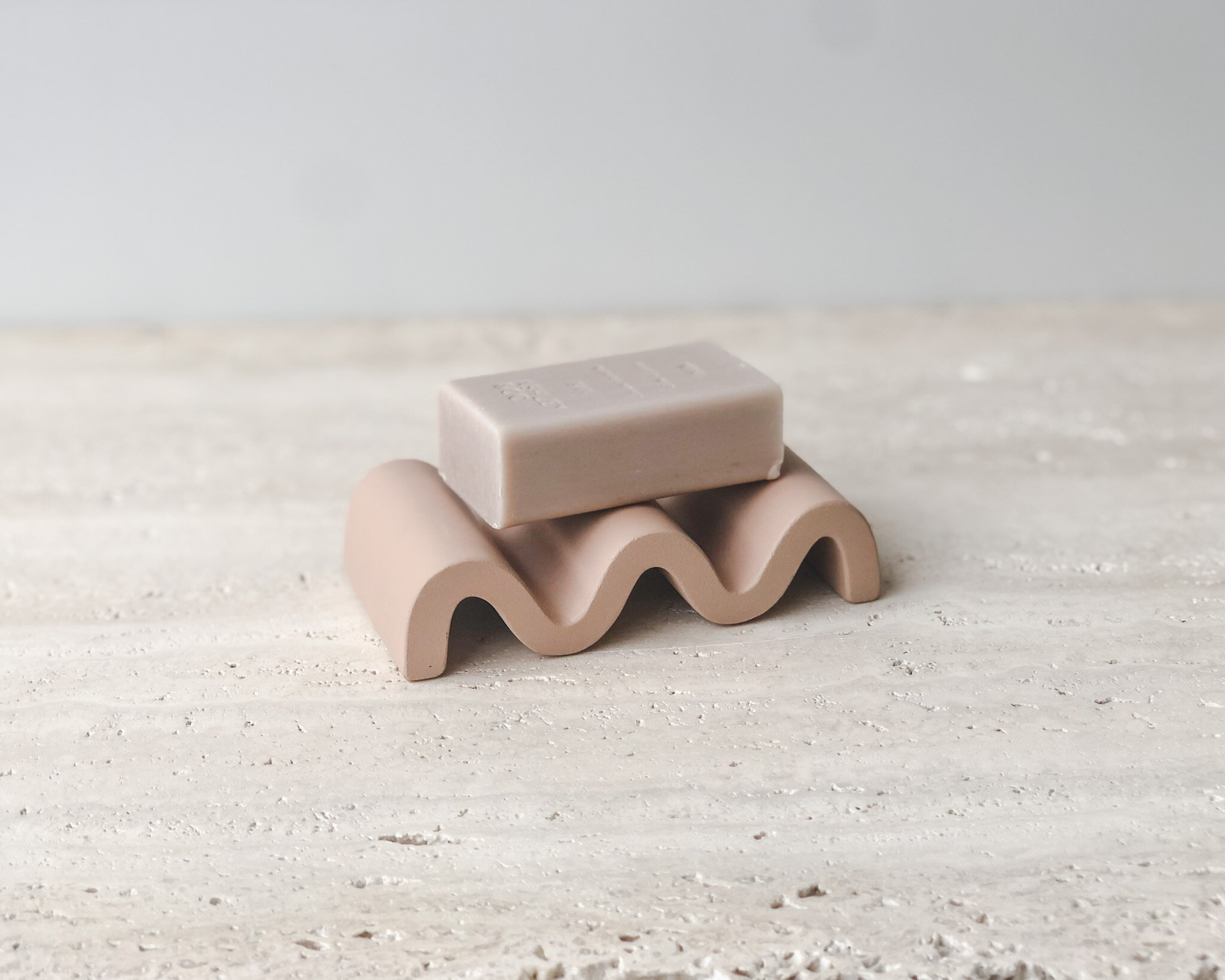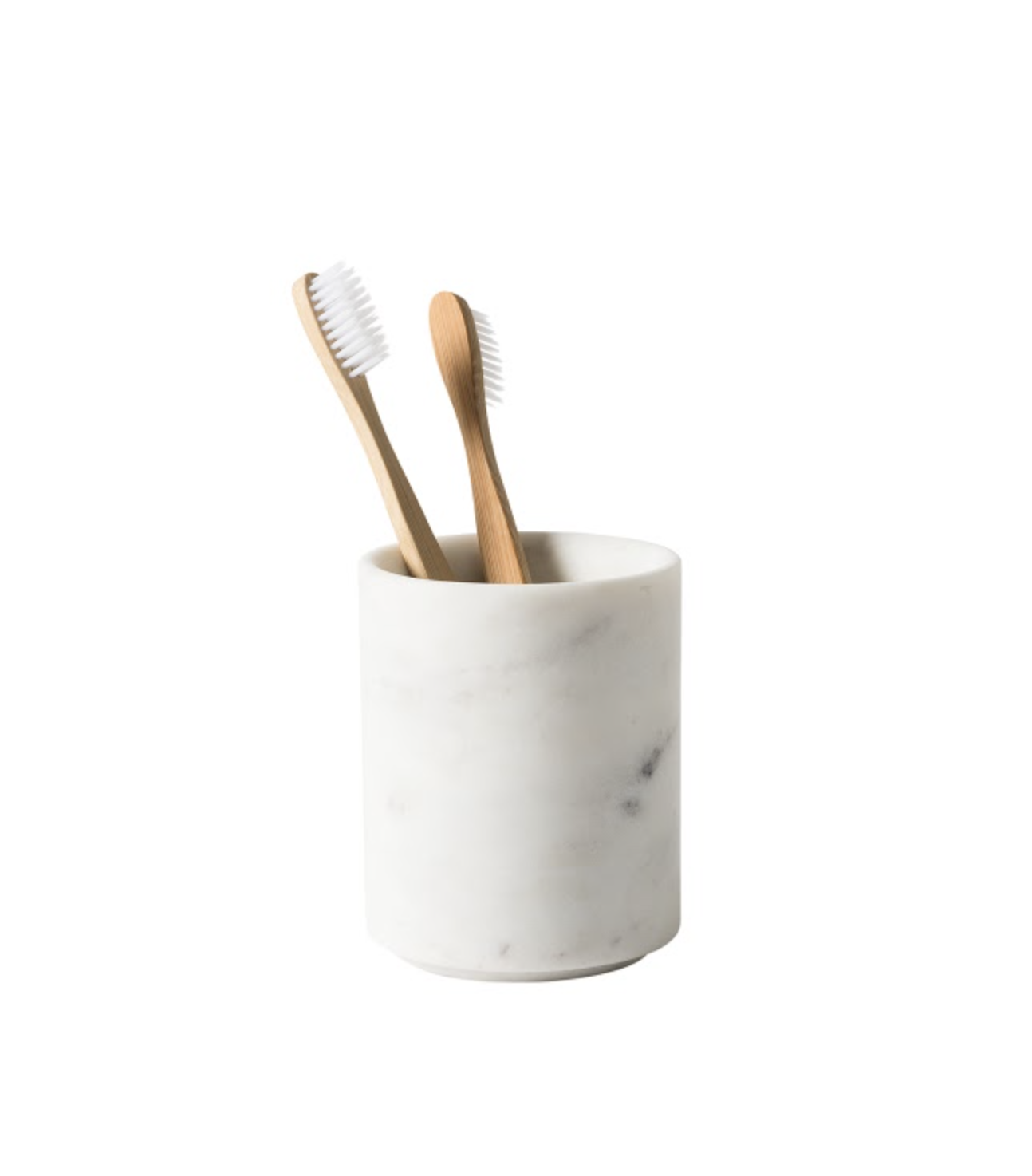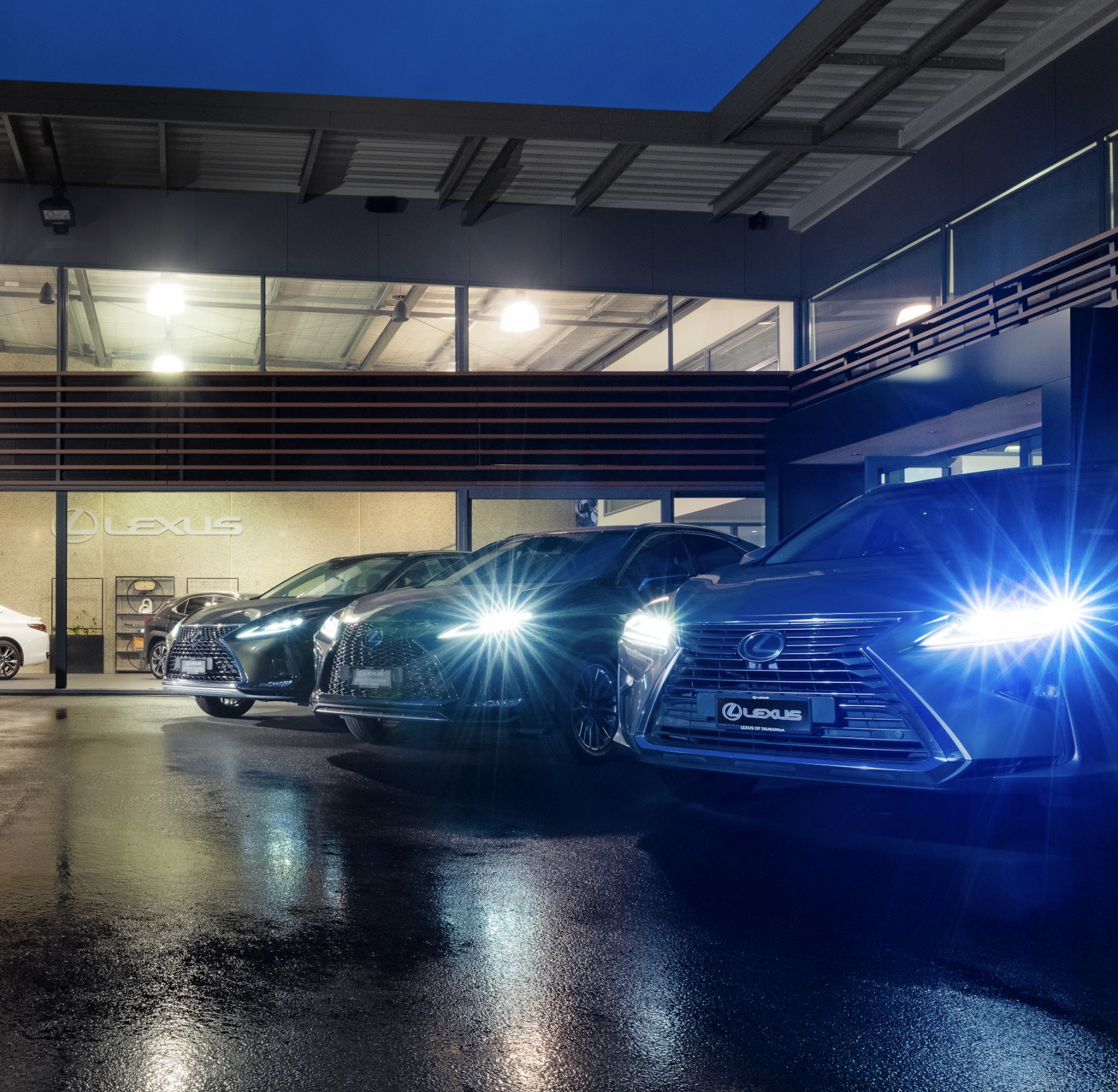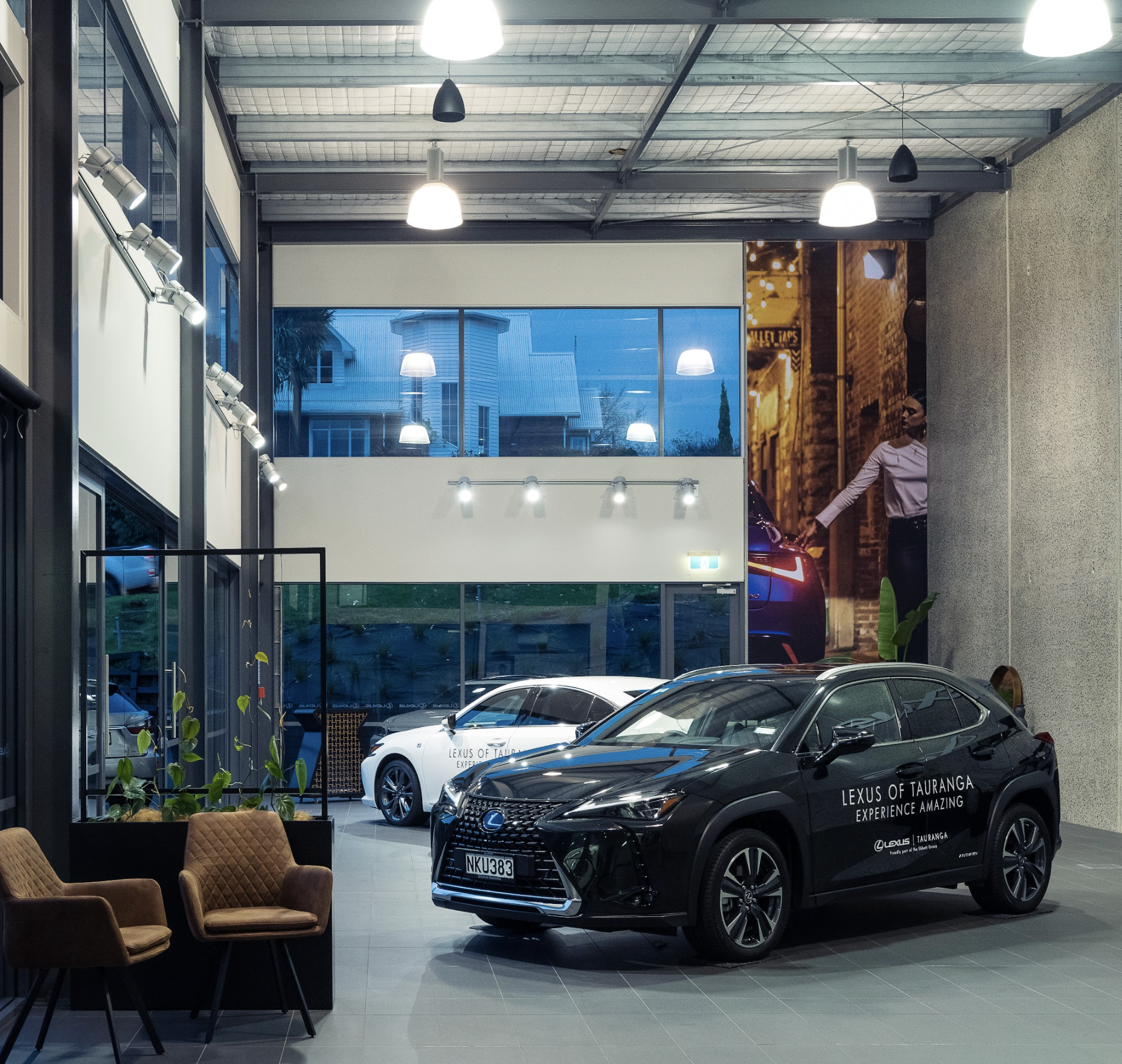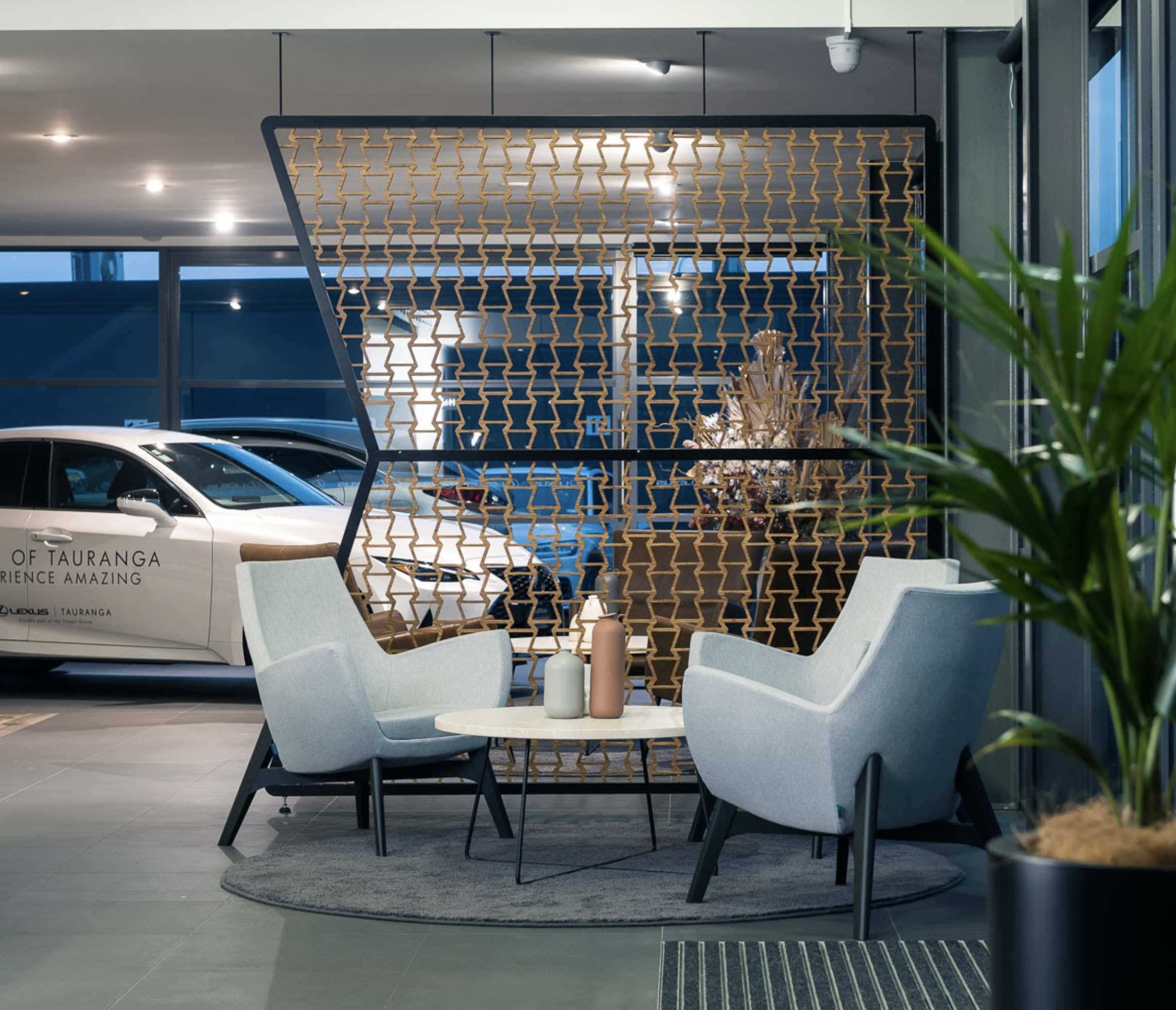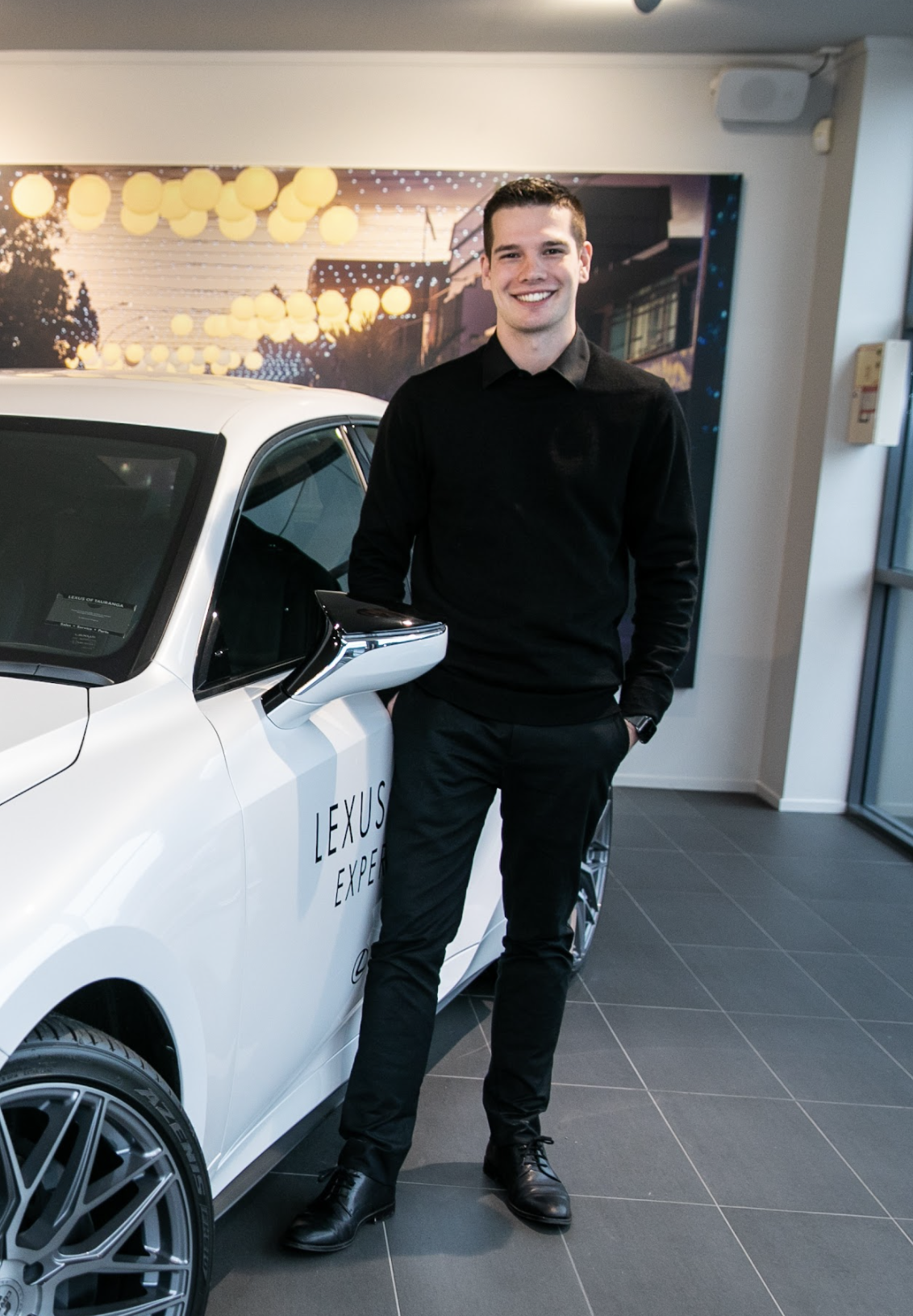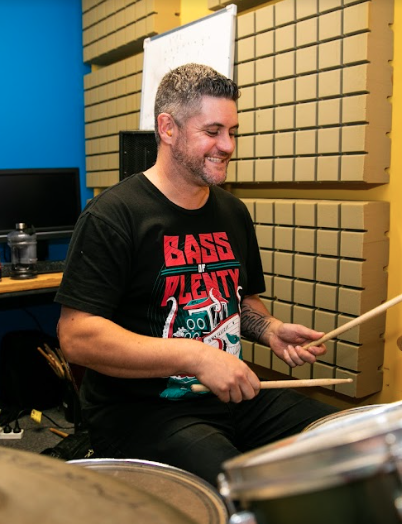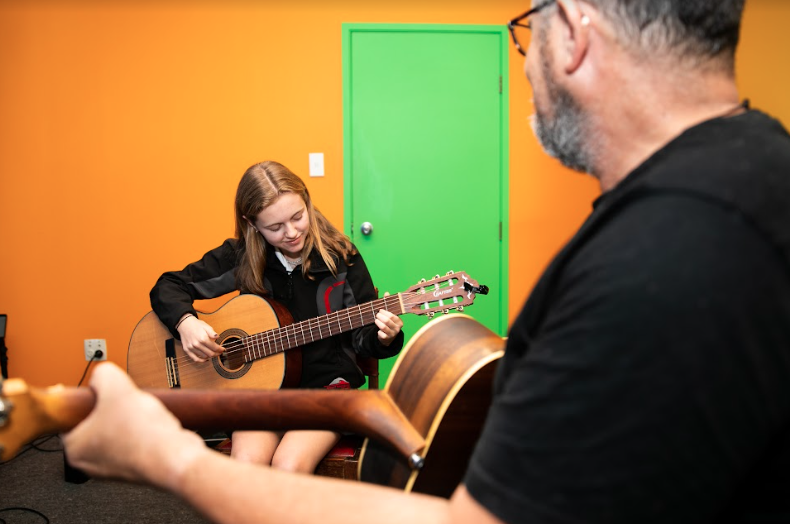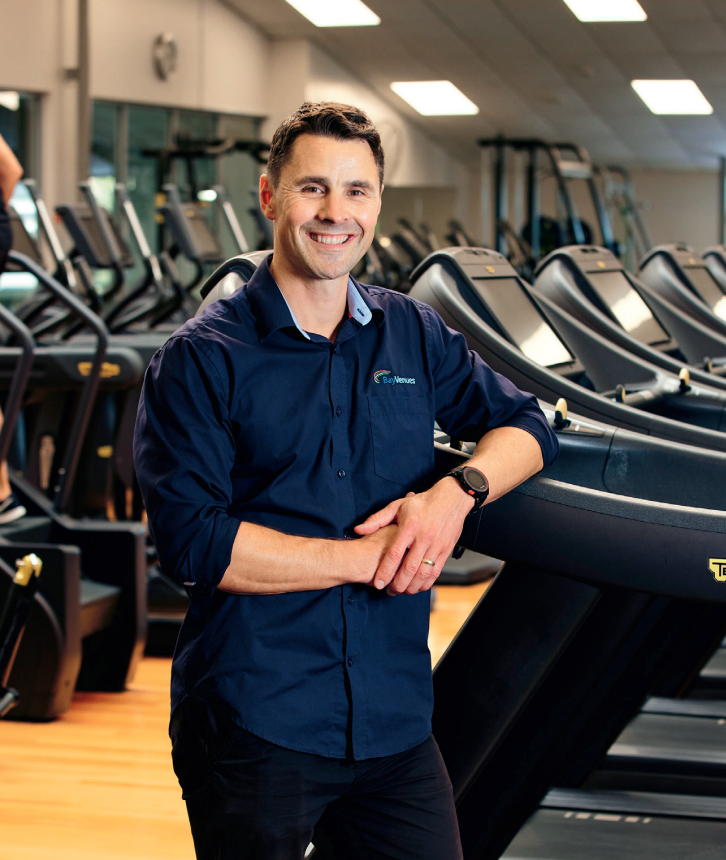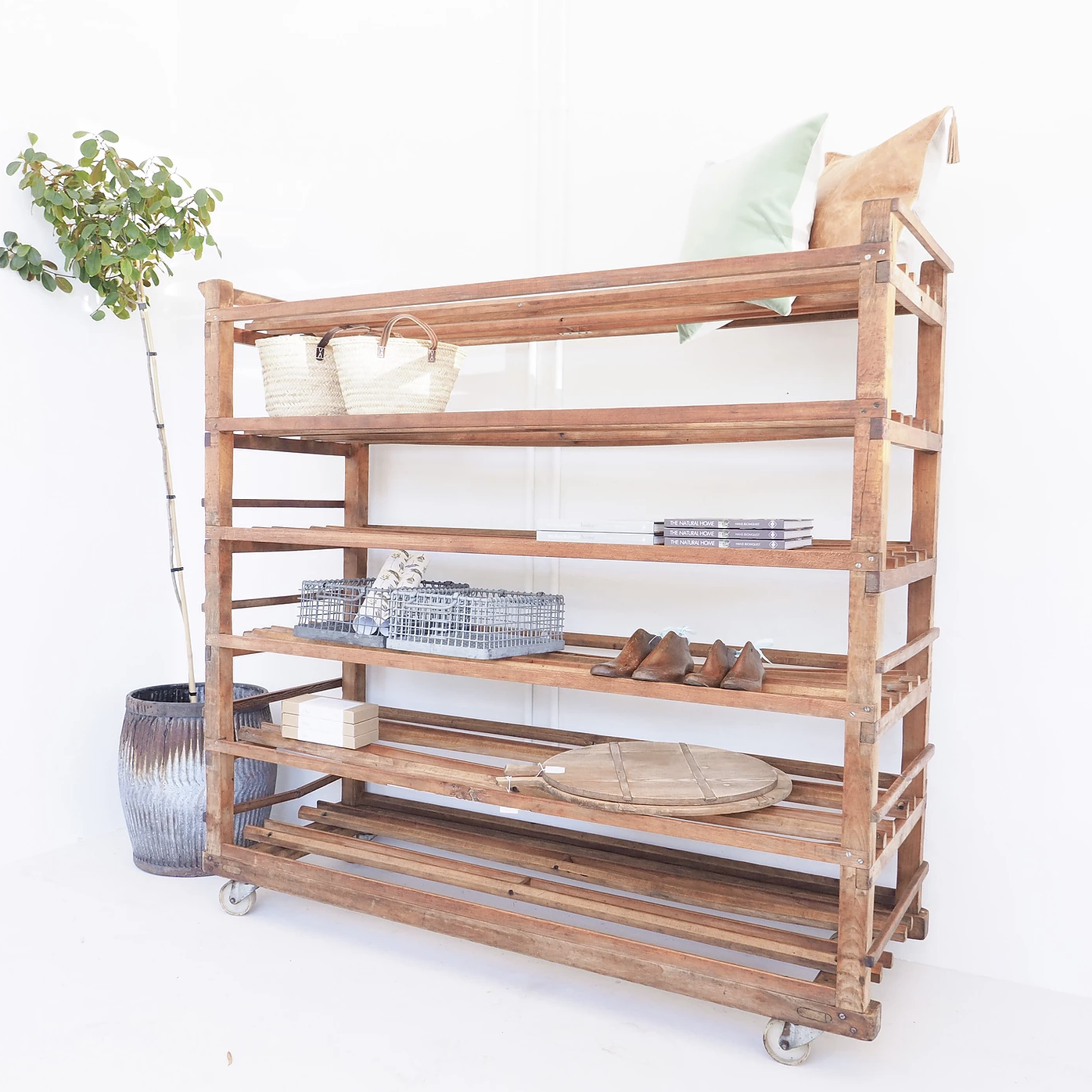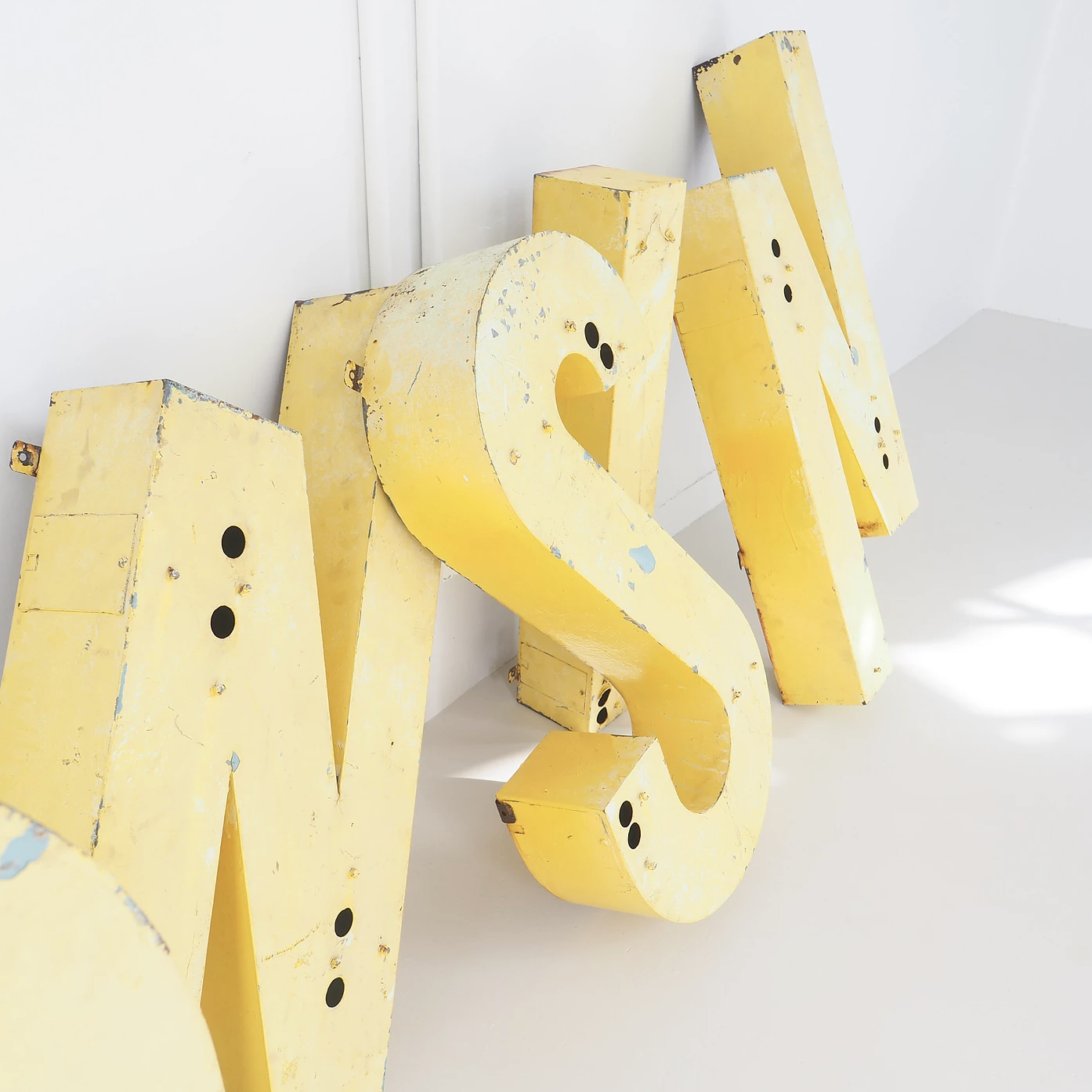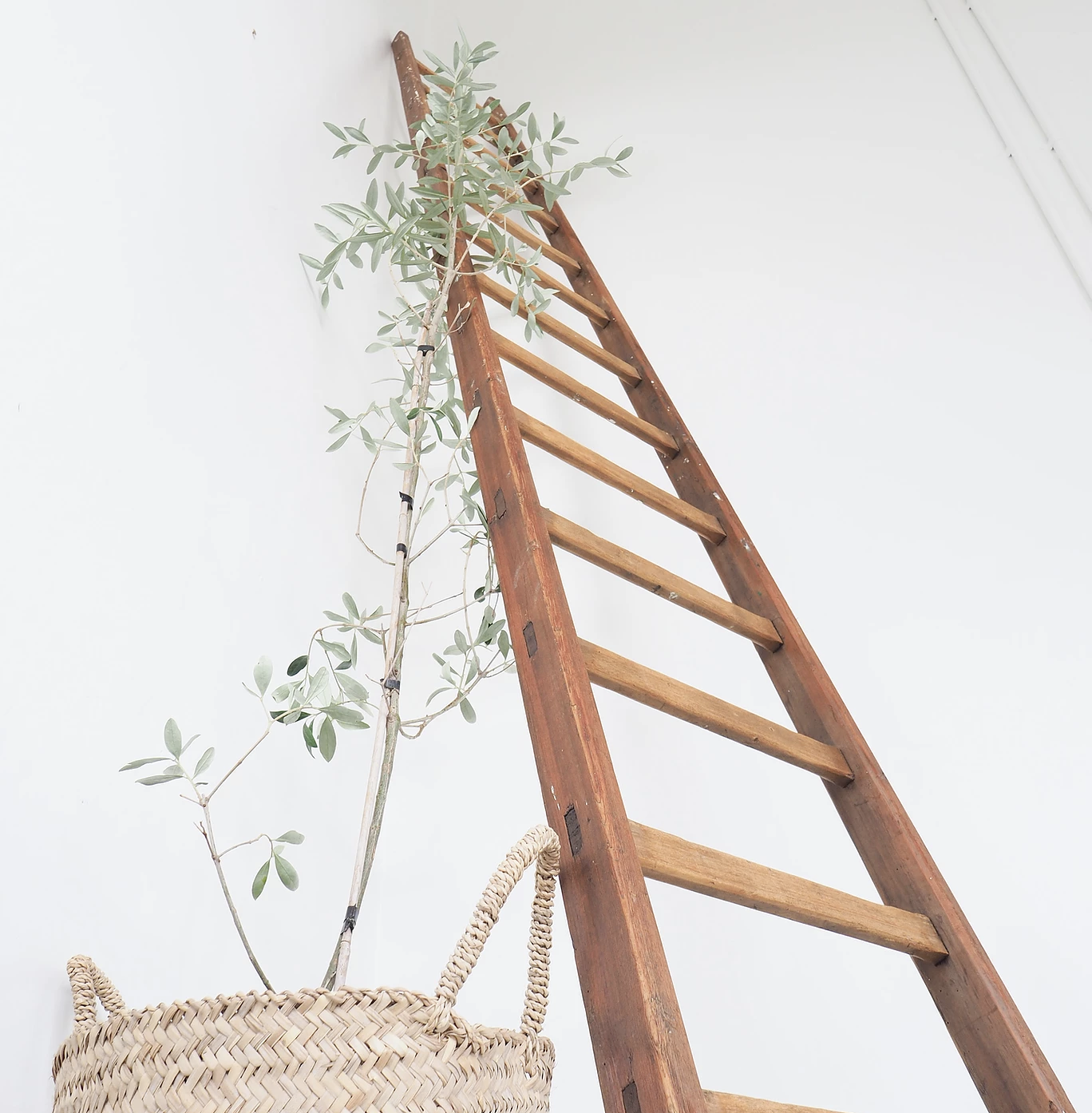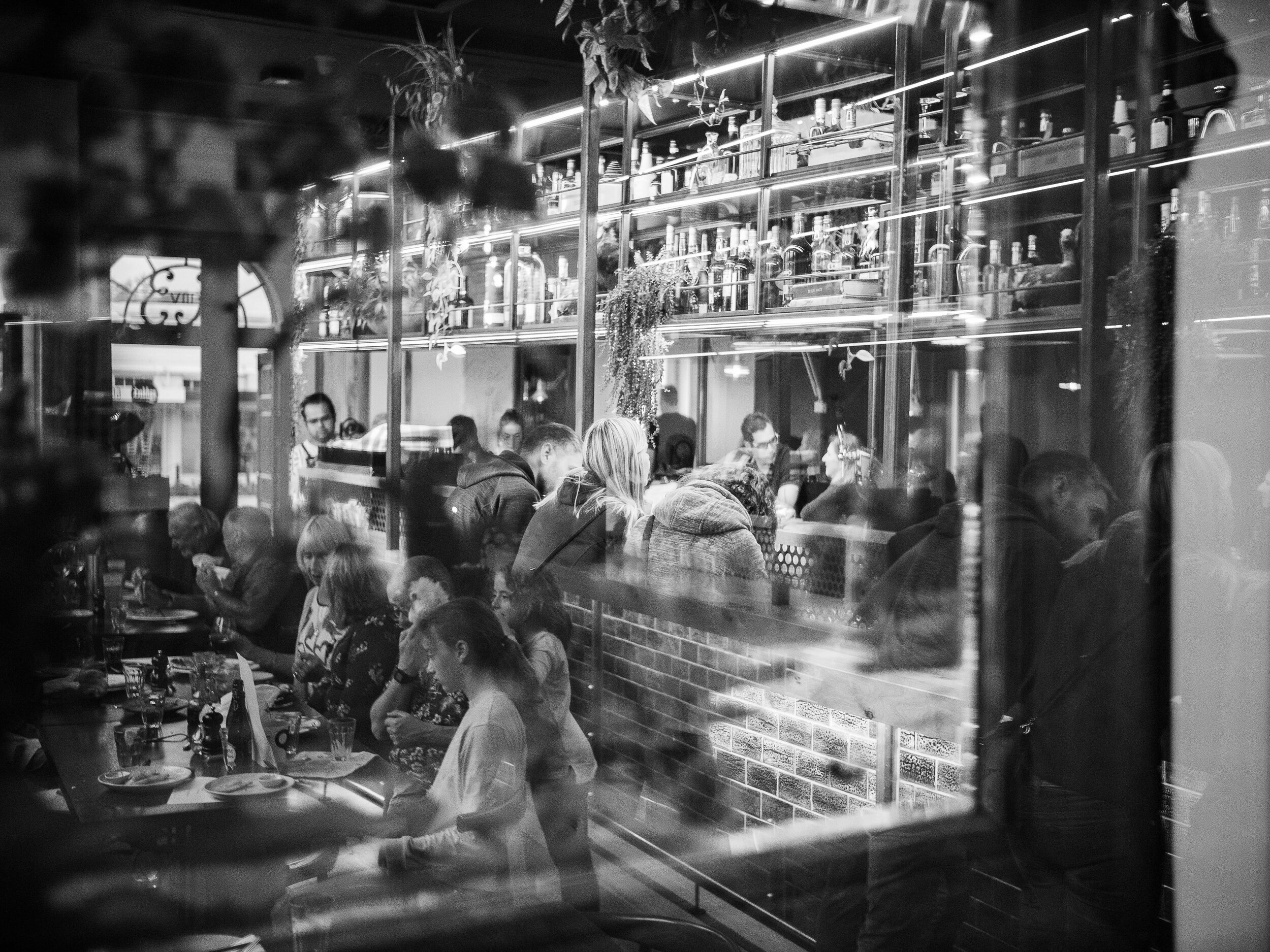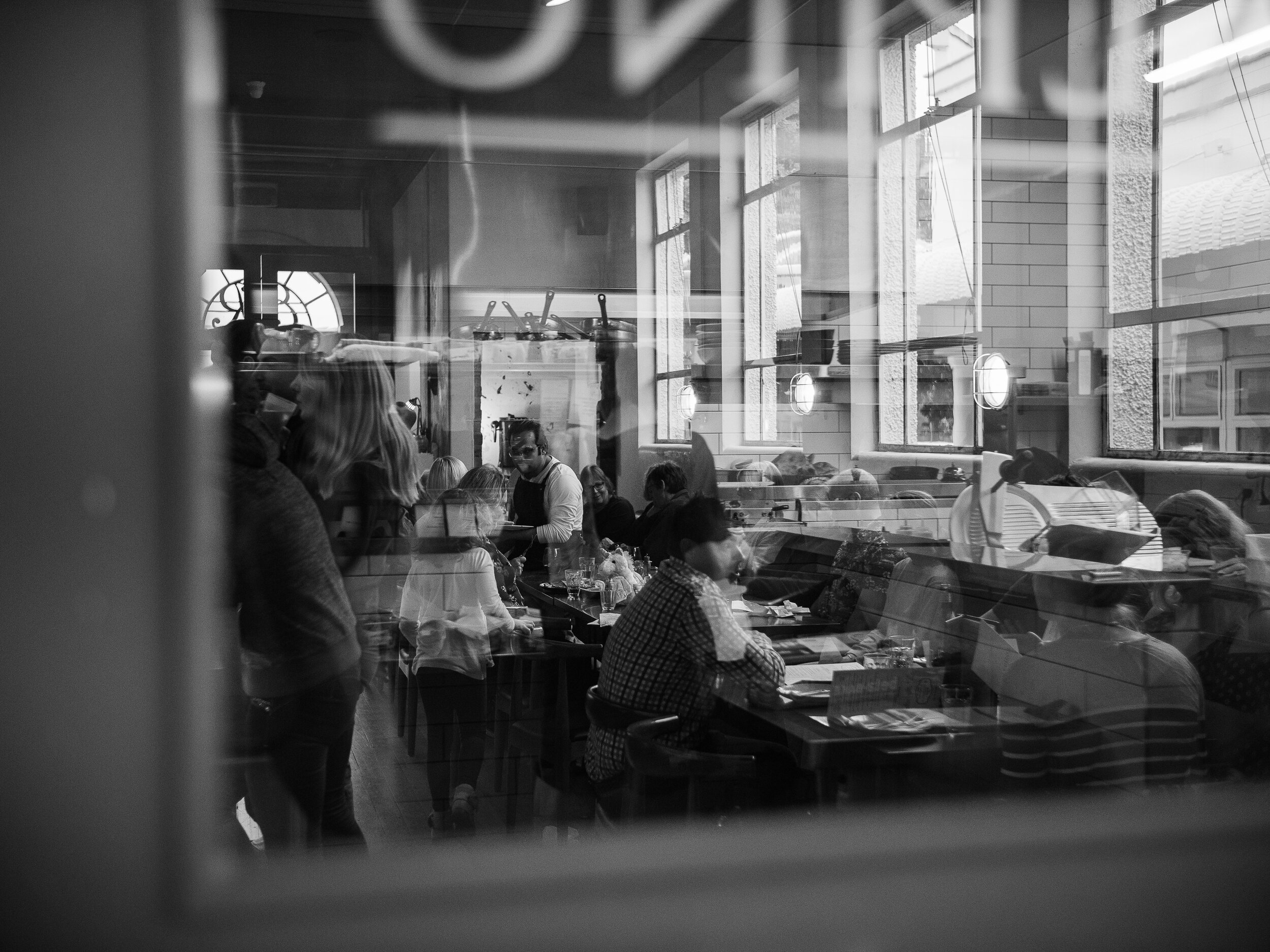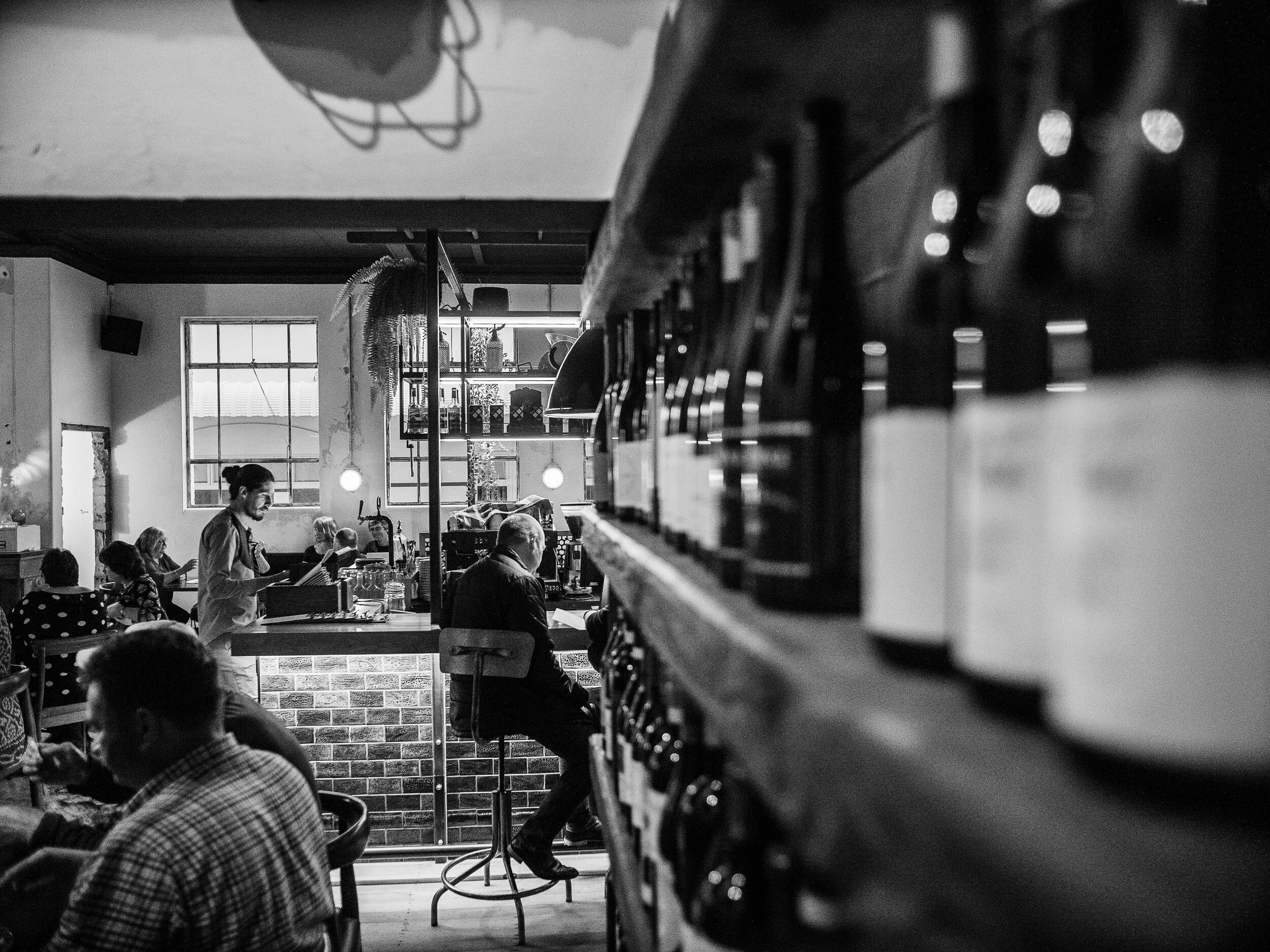Reap the rewards
Thinking of purchasing an investment property? Let Joanna Martinez-Hart from EVES guide you through the ins and outs of becoming a landlord.
Thinking of purchasing an investment property? Let Joanna Martinez-Hart from EVES guide you through the ins and outs of becoming a landlord.
interview Monique Balvert-O’Connor / photos Salina Galvan + supplied
Joanna Martinez-Hart is a stress remover and a matchmaker.
As EVES Realty BOP rental property management expert and group manager, she and her team provide peace of mind for landlords, helping them navigate the various aspects of rental ownership. Finding
a suitable tenant match is merely the starting point.
The value of tapping into the services of a rental management team has long been realised, but recent challenges – such as new compliance laws, Covid lockdowns, and huge numbers attempting to find rental accommodation – have made engaging a property manager more appealing than ever.
In addition, certain aspects of society have changed over the decades with people appearing busier with work and family commitments. Employing the services of a property manager to look after rental assets frees up time and gives owners the peace of mind to carry on concentrating with everything else happening in their lives.
Ready to help are Joanna and her large team, who cover the BOP and Waikato regions. Her team members have collated a wealth of experience and knowledge with EVES over the years. They’re loyal to EVES (a company which has been in business for more than 50 years) – which offers great consistency for the landlords and for the tenants whom they work with.
The EVES Property Management team are totally up to speed regarding new compliance requirements, such as the new insurance and tenancy laws, healthy home requirements, and regulations and guidelines for landlords that came into effect earlier this year (some staff members are even landlords themselves). And that’s part of the beauty of using a rental property manager, Joanna says. Having a property manager on board helps landlords pass the sleep test.
“Essentially, we remove any possible stress. We provide peace of mind and help navigate the rental journey,” she says.
All this is of key importance as investing in the rental market remains a preferred investment opportunity for many Kiwis. With a property manager on board, landlords can relax knowing they’ve committed to a solid, well-managed investment that need cause them little, or no, concern.
Owning a quality rental property, like this one from Barrett Homes, can be a secure financial investment.
The positives of investing in the rental market
Owning a rental property continues to be a financially secure investment, Joanna says, with property owners enjoying a good return on their money in terms of rent and capital gains at present (certainly more than they would achieve if their money were in the bank).
Rental property owners enjoy the opportunity this form of investment offers in terms of providing a passive income, and there’s flexibility around choosing the right time to sell.
“Having a rental also provides the option of having a property to move into, if required. It could be that the property is bought as a rental, but the owners later opt to make it home. If owners transfer away for work reasons it can be a good idea to rent their property out, achieve capital gain, and have a home to come back to if that’s how things unfold,” Joanna says.
Hiring a management team for your rental means you don’t have to do the dirty work.
What does a property management team do?
So many things!
“To start with we secure tenants. To do that, we market the property, conduct the viewings and vetting, deal with contracts, initial inspections and hand-overs and liaise with applicants. We make sure the property is presented in the best way and strive to find the best tenant for the property.”
It doesn’t stop there, Joanna adds. There is much to do throughout the tenancy, such as maintenance checks, regular inspections, monitoring of rental payments and liaison with the owners. If there are any payment issues then these too are dealt with by the property management team.
The team also deals with clients giving notice and then the cycle begins again.
On a more advisory level, a property manager can also advise where market rents are at. Keeping up with current market rents (and with maintenance) helps property owners maximise the return on their investment.
Landlords also need not fear they’ve failed to tick all the latest boxes regarding legal requirements
– a property manager will ensure they’re up to speed and there’s nothing to be concerned about.
While it’s not common, things can get complicated and go wrong on the tenancy front. If there’s a need to involve the Tenancy Tribunal this too is an area the EVES Property Management team has experience in. They can remove the “daunting” from the equation.
“Once people use our services, they generally come back to us. They see employing an EVES rental property manager as a good investment. There are no hidden costs, and they can claim tax on our fees,” Joanna shares.
Why now is a good time to employ a property manager Tenancy laws are complex and have undergone change in recent times.
An example is the Residential Tenancies Amendment Act, that largely came into effect in February. Joanna and her team help navigate this. Amendments to the act should not have a negative impact on landlords as long as excellent tenant vetting has been carried out throughout the application process, Joanna assures.
Many layers of compliance have recently been introduced to ensure tenants live in healthy homes.
This shouldn’t put people off being landlords as essentially it is about being prepared to be a good citizen providing warm, dry and safe living conditions, Joanna believes. Landlords can leave this concern to her team as they employ experts to access whether rented properties adhere to the healthy homes legislation. This is a law and a non-negotiable and Joanna and team won’t work with landlords who are not prepared to comply. Most properties do comply with some of the stipulated five standards, she says, and it’s just a matter of working with the property managers to get the property fully compliant.
Managing compliance in general is something landlords can leave to a property manager. The EVES team includes compliance specialists and has access to professional tenancy consultants to ensure landlords are compliant.
Resources, tools, and robust systems required to find good tenants are all part of the EVES team’s arsenal. Tenant selection has become increasingly time consuming because of incredibly high demand. The EVES team deals with the numerous applicants – outsourcing background checks in the process. For a standard three-bedroom home, it’s not unusual to get at least 50 applicants per property these days.
Amendments to The Privacy Act 2020 are coming into effect. This act governs how agencies collect, store, use, disclose, and give access to personal information. The Privacy Office has launched a new compliance monitoring programme to ensure all landlords, managers and property managers comply, which is something a self-managing landlord may not be aware of. A property manager will ensure landlords are not leaving themselves at risk.
And then there is Covid. Throughout the Covid lockdowns, the EVES property management team worked very closely with tenants and landlords to assist tenants in the difficult times and to mitigate loss for the landlords.
Joanna’s FAQ
What happens if a tenancy turns bad? Good tenant selection at the outset is imperative. Ninety percent of landlords and tenants are great. However, when things do go wrong, there are processes to follow in the Tenancy Act, which can be daunting to a landlord, but EVES has the resources to manage this.
As a side note: there is a perception that the law is more in favour of the tenant, but the reality is, the law is there to protect tenants from unfair and unreasonable landlords.
What happens if the tenant doesn’t pay rent? We have good systems and processes in place to mitigate rent arrears. Our property managers are very experienced in dealing with this if need be.
How long will it take to rent the property? There’s nothing to be concerned about on this front as demand is high in this current rental market and Bay of Plenty is a desirable place to live.
What about methamphetamine use and contamination? We tell all owners they should ensure they have comprehensive insurance cover for all aspects of owning a rental – and should take special note of the meth component of their insurance policy. We talk them through the insurance needs.
Should we be concerned about compliance costs and costs in general? Most of the cost is one-off to make rentals healthy home compliant, and then there’s ongoing maintenance. Owners who keep up with maintenance get a better return, so it’s important to expect to spend some money on the upkeep of the property.
Are new regulations putting people off buying rentals? No. Most new landlords coming to the rental market know of, and expect to meet, the current regulations.
Where does the return on investment (ROI) on a rental property sit in the Bay of Plenty? Indicative rental yields for a three-bedroom house (as of June this year) in selected areas with high rental activity are for example: Greerton 4.1 percent; Bethlehem 3.7; Mt Maunganui 3.6; Pyes Pa 4.2; and TePuke 4.3.
NB: A rental yield is determined by the annual rental income divided by the property price.
How can I allay any fears around renting out a property? Give me a call and let our EVES Property Management team assist, so you can sit back and reap the rewards of a sound investment minus any major concerns.
Laying down roots
Big on recognising talent, KPMG’s Tauranga office shows off its dynamic team, working culture and new services.
Big on recognising talent, KPMG’s Tauranga office shows off its dynamic team,
working culture and new services.
words Monique Balvert-O’Connor / photos Erin Cave
KPMG Tauranga is building on its already impressive reputation and skills base.
The firm, which is focused on fueling prosperity for its clients and communities, has expanded its Tauranga offering. Services that used to be the realm of large businesses and big cities have arrived here and Tauranga (and Waikato) businesses and organisations are benefitting, thanks to a progressive outlook and a powerhouse of KPMG people.
Services around strategic advisory, deal advisory and taxation have been expanded/enriched in Tauranga. KPMG realised it was time to “put its boots on the ground in Tauranga” and make these services more accessible to Bay of Plenty and Waikato clientele. They have the perfect people on board to do just that.
UNO spoke to KPMG Tauranga partner Tracy Preston-Lett and directors Cushla Parish and Natalie Berkett, associate-director Charmian Mead, and senior manager Michelle Sinclair about the new services they (and their teams) offer, the energy and smarts they bring, and about the many reasons they applaud the KPMG working culture.
Tracy Preston-Lett feels “incredibly lucky” to be trusted with clients’ dreams.
Tracy Preston-Lett feels “incredibly lucky” to be trusted with clients’ dreams, and relishes having a shared-responsibility to help her colleagues be their absolute best.
“I believe in our people and our clients and if there’s any small thing I can do that energises them – be that sharing some words of wisdom, some connection or technical or practical insight, or just being someone to brainstorm with – then I’m up for it.”
As a partner of this Big 4 global accounting firm, Tracy’s come a long way since those leaving-school days when she lacked any real career drive. KPMG creates the same opportunity Tracy embarked on, thanks to its policy of recruiting school leavers – enabling them to learn and earn without necessarily having to leave home.
Tracy worked and studied and earned her degree and promotions while getting valuable experience from a young age.
She’s proud of what she’s achieved within this firm that collaborates nationally, and connects internationally, for the benefit of its clients and advancement of its people. There’s a great diversity of skills and backgrounds to tap into.
She doesn’t have to look far to encounter an impressive skills base – within her office are staff who thrive on using their specialist skills to help businesses find their feet and create long term success. It’s thanks to some of these superstars that the KPMG Tauranga team has been able to up its offerings of late.
Cushla Parish joined KPMG in the consulting division, but 12 months ago, a strategic move was made to create a dedicated audit technology risk team, which she now heads. It’s a national specialist team which Cushla runs from Tauranga.
KPMG Audit Technology Risk director Cushla Parish is one of those who is driving impressive change and is a role model for KPMG’s support for remote working. She joined KPMG in the consulting division, but 12 months ago, a strategic move was made to create a dedicated audit technology risk team, which she now heads. It’s a national specialist team which Cushla runs from Tauranga.
Essentially her team assesses clients’ IT-related controls predominantly focused on access, change management, programme development, automated business process controls and operational controls… all to ensure appropriate measures are in place to mitigate risk.
“The work we do is predominantly to support the audit division across lots of industries. We go into companies, big and small, and look at their internal controls to mitigate any risk around their IT systems and to ensure the integrity and reliability of their systems,” Cushla says.
Another focus area is the provision of governance risk and compliance services, which Cushla delivers through her involvement with the national internal audit consulting team.
Cushla brings to KPMG experience in predominantly the agriculture, manufacturing and local government environments. She has worked in the United Kingdom, Europe and Australia within various industries’ audit teams. Her first job was with another Big 4 firm also within the audit arena and she came to KPMG with previous director experience.
She is a Certified Information Systems Auditor (a globally recognised qualification) and a SAP expert – a highly ranked financial application favoured by big businesses with complex concerns. She left university armed with a Bachelor of Management Studies (honours) degree majoring in information systems and marketing.
KPMG is big on recognising talent and offering leadership opportunities. Cushla is a participant on KPMG’s Leading the Firm programme, that provides additional coaching and opportunities to excel for those identified as having leadership potential.
Natalie Berkett speaks of the growth she’s seen in the KPMG Tauranga tax team numbers over recent years, and an “exciting” focus on building up a Small to Medium Enterprise (SME) tax specialty.
KPMG Tax Division director Natalie Berkett, meanwhile, was nominated by KPMG to attend a full-year New Zealand Leadership course involving self-discovery as well as analysis of issues of national and international significance.
This director thrives on learning opportunities – she has both a Bachelor of Laws and a Bachelor of Commerce. She accepted a graduate position with KPMG back in 2006 and has never moved elsewhere! In those early days she enjoyed a three-month secondment to KPMG’s Beijing department and four months off to travel (her job was held).
Natalie speaks of the growth she’s seen in the KPMG Tauranga tax team numbers over recent years, and an “exciting” focus on building up a Small to Medium Enterprise (SME) tax specialty.
“There are a lot of privately-owned businesses in the Bay of Plenty and a lot of the work our team does is focused on issues quite specific to SMEs like land transactions or expanding offshore.
“What I am leading nationally, is a focus on growing and fostering our SME clients faced with complex tax issues. This involves identifying opportunities where we can assist from a tax perspective and providing a team of tax specialists that understand SME issues.”
It’s exciting, she says, that KPMG is consolidating the expertise that we already have into a more coordinated and focused service offering.
Natalie, who has an interest in the export sector in particular, sits on the Export New Zealand BOP executive committee (she’s just stepped down as Chair). She offers her expertise to this group of exporters and service providers who meet to discuss issues facing their sector and the BOP specifically.
“I enjoy this as I get to hear first-hand the issues businesses are facing and it builds up my commercial understanding, which, of course, benefits clients,” she says.
Charmian Mead’s switch from the Wellington to Tauranga office in July this year meant strategic advisory became more available to businesses and organisations.
Charmian Mead also boasts impressive qualifications, with a Bachelor of Science degree, a Bachelor of Laws, and a Master of Bioethics and Health Law.
Her switch from the Wellington to Tauranga office in July this year meant strategic advisory became more available to businesses and organisations using KPMG services.
Charmian joined the KPMG Tauranga team as Private Enterprise Advisory Team associate director. She not only heads the firm’s strategy advisory services in Tauranga, she is part of a national private enterprise advisory team. Her working day involves helping create or design strategies aimed at enabling businesses and organisations to achieve success, whether that be domestically or on the global stage.
“Our team works with a wide range of clients who, fundamentally, we help grow. We help them achieve high performance and growth through a range of advisory services, such as strategy development and implementation, business and operating model design, market insights and validation, and export planning and activation, to name a few.”
Charmian, who initially worked as an intellectual property lawyer, was keen to get involved in broader aspects of business. She recognised that working for a Big 4 would offer the platform and portfolio from which to reach into organisations she wished to work with and this led her to KPMG – initially in Wellington.
“I like to work with ambitious community and organisational leaders, entrepreneurs, innovators and visionaries. These are the people I think are out there who drive meaningful impact for communities and the New Zealand economy,” says this woman who is big on social justice.
“I know it sounds cheesy, but I just like helping people and love seeing them create impact. I see my job as
the opportunity to really amplify that impact through working with others. On my own, I can come up with ideas, but if I work with 10 peoples’ ideas that’s much more exciting!”
Charmian’s arrival in Tauranga also heralded the launch of the KPMG Business School in the region. She is a key member of a team that delivered this initiative in Wellington, and is now making the opportunity available to BOP and Waikato business and community leaders.
“This school was created because we saw there were a lot of business and organisation leaders who lacked strategic capability. We designed a workshop to help with this and give them tools and a framework to take back to their workplace. Business and organisational leaders, who have been identified as having potential, are invited to attend these interactive learning workshops to understand how they can strategically achieve their ambitions.”
Charmian put her hand up to come to Tauranga as she could identify “huge potential” within the region. She sees how business “complexities and challenges” faced by business owners have grown as the city has grown and applauds KPMG for being in step with that.
She’s enjoying becoming part of the community and the region’s business ecosystem. “It is also exciting to be part of an organisation where everyone is super smart. Anytime a client needs help with something, I know I can find someone within KPMG who can assist.”
Nationally, KPMG has about 1,300 staff, including about 90 partners. And then there are the international offices. Charmian believes KPMG’s international status carries great benefit to clients.
“A big thing that attracts clients – from start ups to big global brands, is we can partner with them throughout their entire business journey as we have depth of expertise, scale and a global footprint.”
Michelle Sinclair brings with her, experience as a business owner in the start up and growth phase.
Also relatively new to KPMG is Michelle Sinclair, a Private Enterprise Team senior manager. Before this she worked elsewhere as a senior tax manager, and before that she and her husband spent 18 years working on their own IT-focused business start-ups – she using her strong accounting background. Through that business experience she identified an interest in tax law. Michelle has also been a lecturer at a tertiary level.
When KPMG Tauranga made the decision to build up its business advisory team, Michelle came on board. “I love tax law and love supporting SMEs. I draw on my own valuable experience as a business owner to work alongside other entrepreneurs navigating the business lifecycle, from start up to exit.”
She’s also particularly passionate about women in business.
“I was the Chief Financial Officer of emerging businesses experiencing rapid growth in a fast-moving industry, a wife, I had children and miscarriages, I moved countries without a support network… Women in business have numerous demands on their time and have to juggle a multitude of things, all while driving business performance.”
Michelle appreciates how KPMG acknowledges she is an avid learner and hence she has Friday’s off for study.
Her initial tertiary qualification was a Bachelor of Management Studies majoring in accounting and finance. Years later she tackled a Master of Taxation Studies, passing with first class honours. She is currently pursuing a law degree – learning about general law provides an underlying layer of knowledge that she can apply to her tax law specialty, all to the benefit of her KPMG clients.
Beyond that? “A PhD in tax law could be a big, hairy audacious goal,” she laughs.
Some more of the good
Work flexibility
KPMG is big on enabling staff to work in a way that suits their circumstances. Staff work from home, can work with ease remotely across the country or any office or location, and can take career breaks to chase sporting or travel dreams, knowing their jobs are being held open for them. They can also work part-time knowing this won’t jeopardise their career pathways.
“We have people come and work in our office from other locations, which supports our community and business ecosystem here in the Bay,” Tracy tells.
“We’ve had team members working remotely from Wanaka enjoying that lifestyle while simultaneously keeping their careers on track within the Big 4. We’ve had employees, employed by the Australian firm, working in Tauranga.”
Helping the younger generation
KPMG recruits five students from local schools in the Tauranga office every year. Summer internships and a graduate intake are also on offer.
Community Spirit
KPMG staff are involved in community projects such as buying Christmas presents for everyone at one of Tauranga’s low decile schools and have recently started a workplace giving programme with Acorn Foundation.
It’s but one of many great things fuelled from KPMG’s Tauranga impressive engine room.
Mount Dobson
Can you keep a secret? Luckily for you, neither can we. Discover the magic of Mount Dobson.
Accommodation at Parkbrae Estate at Lake Tekapo, along with car hire, was easy to book through Booking.com.
Can you keep a secret? Luckily for you, neither can we.
words Jenny Rudd / photos Ben Hunter + supplied
Scything down the slope, plumes of glitter spraying behind him, my husband Mat whoops with joy after yet another run down the sundrenched slopes at Mt Dobson. Even though it's the winter school holidays and the snow and sun are plentiful, there are just a handful of people up here. Apparently the first rule of Dobbo is no one talks about Dobbo. That's what we were told by a Mackenzie Country local who has been skiing here for 35 years. And it explains why barely anyone's heard of the best-kept snowy secret in Aotearoa. This ski field has some of the country's best snow, every year, the best weather, the friendliest atmosphere and the least people. Allow us to lift the lid.
Skiing terrain
This is family skiing at its best. There are four lifts; one chair, one pommel, one T-bar and a beginners' rope tow. The basin is wide and open, and the runs are never crowded. We didn't queue for lifts, and we always found new places to explore over the week. The kids found some cool jumps and you could see right across the slopes to your little ones on one of the best learner slopes in the country. We skied every one of the seven days we were there. The sun shone, the powder fluffed around, and we wanted to stay another week because another dump was expected.
Ski school
Our four children had a two hour snowboarding lesson every morning with Archie, whose patience must not go unmentioned. All four went from absolute beginners to bombing down all the slopes by the end of the week. The lifties and instructors were all friendly and greeted everyone by name. You can book lessons before you arrive or on the day.
Writer Jenny and her brood of skiers and snowboarders about to hit the mountain for some serious shredding.
Eating on the mountain
Fairlie Bakehouse Pies. If you've had one before you'll be getting flashbacks around now. The pork belly and apple pie had a generous chip of crackling on top, and was an absolute winner. The café serves coffees, hot chocolates, pies and instant noodles. Sit round the heater in the cafe, or chuck a few folding chairs in the back of the car for a car park picnic. We took snacks up every day and left the car open so that we had a base to come back to.
Kit hire
You can hire all your kit from the well-stocked hut up on the mountain. We hired trousers, jackets, skis, boards, boots and helmets. Bring your own gloves, goggles, hats and gloves. Arrive early as it gets busy.
Peter Foote
In the seventies, Peter Foote climbed to the top with his cousin and thought 'This is it!' He spent seven years building a 17km road up to the ski field, and has been running Mt Dobson for the past forty years with members of his family. If you can get hold of a copy, read his book Against The Odds. I don't think there'll ever be another story like it. You'll see Peter whizzing around the slopes on various machines.
Stay in Lake Tekapo
We booked our accommodation on the booking.com app because of their flexible cancellation policy. There was no guarantee that snow (yes please!) or covid (no thanks!) would play ball. There are a huge range of options on the app to suit budgets and your group. We went for a house on the Parkbrae Estate, on the lake front by the Church of the Good Shepherd. The whole town is very well set up for visitors with a flash Foursquare, and great outdoors shops.
The stay at Parkbrae Estate, booked through Booking.com, was perfect for a family of six.
Do
Any non-skiing days are easily catered for in Lake Tekapo. Book into the Dark Sky Project for some stargazing, or soak in the hot springs overlooking the lake at Tekapo Springs.
Getting there
The booking.com app was a winner for car hire. We got a very roomy Audi Q7, which came with a roof box and snow chains. It was seamless, and as soon as we'd booked online, someone called to make sure we had everything we needed for our trip. The flight from Tauranga to Christchurch was direct, then the car was ready and waiting at the airport.
We were guests of Booking.com for accommodation and car hire, and Mt Dobson for lift passes and kit hire.
Denise Arnold: Changemaker
In a world where so much is wrong, BOP legend Denise Arnold makes the right kind of difference – bringing purpose and hope to the abandoned generations of Cambodia.
In a world where so much is wrong, BOP legend Denise Arnold makes the right kind of difference – bringing purpose and hope to the abandoned generations of Cambodia.
words nicky adams / photos graeme murray + stacey simpkin
styling lisa shea / hair + makeup desiree osterman
It is relatively rare to meet someone who channels their energies into the greater good rather than individual gain. Even rarer when they seem oblivious to the fact that this trait is in part what makes them exceptional. Denise Arnold, although I’m confident she’ll absolutely hate it being said, is just such a person. In 2007, she founded the Tauranga-based Cambodia Charitable Trust, which, through developing quality education, provides free education to vulnerable Cambodian children (predominantly female). The aim is ultimately to give the children of Cambodia the tools to forge a future for themselves. A future which, otherwise, they would not have even the remotest chance of accessing.
A finalist for this year’s Women Of Influence award, Denise is calm and low key, and what strikes me most as she makes me a cup of tea and we chat about cats, children and COVID, is that while so much of her time must be channeled into the charity, there is a real sense of balance about her. She has a marvellous selection of teas in her tea drawer and has recently rehomed a cat from an aged client at her law firm. Straight away it’s clear she has impeccable taste (the love of tea gave that away) and the kindest of hearts.
A lawyer by profession, in 2006 Denise was busy with two teenage girls and her position as a partner at Tauranga law firm Lyon O’Neale Arnold, when she was galvanised into action by two consecutive events. Her elder daughter Emily had just returned from a school trip to Bangkok, a trip that had heightened every maternal sense of safety and ‘what if’. At the time, Denise was working as a volunteer for ECPAT – End Child Prostitution Pornography And Trafficking (now Child Alert). But with her own daughter away, Denise could not shake the knowledge circling in her head of the literally millions of women and girls who go missing. Around this time, she was triggered by another incident. “I read in the New Zealand Herald about children in Cambodia being rented out of a brothel on a weekly basis – that is no less horrific than on an hourly basis – but for some reason it just hit me to the core. When I read about this I thought emphatically no, no, no, that is not happening on my watch.”
She was told by a friend that a man called Steve Chitty (who became an initial trustee of CCT) was talking about taking businesspeople to Cambodia to introduce honest trade. Steve and Denise spent a year independently researching and learning, during which time Denise became more and more interested in the development aspect. At the end of 2007, the duo headed over to Cambodia. Steve focused on Phnom Penh, and Denise spent about three weeks travelling around rural areas. “That was my way of trying to find out how I was going to bring about long-term change. It’s easy to do good, but it’s harder to do no harm; that’s a really strong principle for me. While we can achieve a goal, we need to be cognitive in our path and the impact that might have.”
Returning from the trip Denise was clear that she wanted to implement change systematically. She identified education as the key, thus the manifesto was set for the establishment of the Cambodian Charitable Trust. The team is made up of key volunteers and educators, as well as Patron Theresa Gattung and Ambassadors Nadia Lim and (former New Zealand prime minister / UN Administrator) Helen Clark. Since 2008 the team in Cambodia has been led by “the truly wonderful, gifted, well respected” country manager Soeun Ouch. Over 14 operational years the organisation may have grown, but the guiding principles remain clear – every person is a volunteer, thus 100 percent of money raised goes exactly where it is intended. Surprisingly, this is actually quite unusual.
Today, the Trust supports 209 schools and tens of thousands of needy children.
Denise doesn’t blather on about how wonderful it feels to make a difference, or the warm fuzzies she gets from providing aid. She is at once compassionate and pragmatic as she talks about the gentle Cambodian culture, and how it is one that welcomes her input. “The people want you to know them – they don’t just want money; they want you to appreciate who they are and the challenges they face.” There was, she says, a learning curve she underwent getting to grips with operating within a totally different economic paradigm, for example quickly realising that instead of handing out pre-made school uniforms, by providing sewing machines and guidance a group of villagers could sew them themselves. The concept of providing the tools, rather than just a pre-packaged solution is an ethos she is passionate about.
When there are so many countries in need, why Cambodia? Simple, says Denise – “I really felt like I was in the right place.” It is perhaps too easy to forget that Cambodia is a country decimated by a brutal 30-year civil war that took place in very recent history. A war which, under the Khmer Rouge regime (1975-9) and Pol Pot, destroyed lives, culture, politicians, leaders, educators, mothers and fathers. An entire generation was wiped out, and another brought up in camps barely surviving starvation and physical abuse. This is a country that was expected to re-learn everything, but in the ultimate of cruel ironies, there was barely anyone left to teach. “The rich history has been dominated by recent history. We’re aware that through Pol Pot a whole generation was lost but also lost were the parenting skills – that will take another generation to correct. Today’s adults were abandoned. There’s a gap that will “take another generation to get right.”
I wonder if, as a conservative society, there is a reluctance to deal with a woman in a position of authority. “Not at all – as a Westerner people turn to you… and I feel we’re sending a strong message to women in Cambodia when our van pulls up and out pile a group of rather rumpled, tired women. They are watching this and thinking, ‘Here are unaccompanied decision makers.’” A turning point for Denise was “the realisation that we had the ability to influence schools far wider than you ever expected. If you retain an open approach to knowledge and expertise and resourcing, then you’re lily jumping. That drove us to think about working into clusters of schools to expand further.” Which all comes back to the concept of teaching someone to fish, rather than giving them a meal.
Still, it must be hard not to be overwhelmed. Denise agrees, but says she took heart when her mother-in-law quoted Eleanor Roosevelt to her: “’It’s better to light a candle than curse the darkness.’ I felt a huge sense of relief that I didn’t need to solve it all, I just needed to do something… My role is to keep my eye on the horizon and keep everyone moving forwards towards a better outcome.” Sometimes, though, such
focus is nigh on impossible. Denise recalls, “We had a baby starving and it really derailed me. I had to try and figure out how to save it. In the end the baby died. I wondered what I could have done differently. My husband said, ‘You’re helping thousands.’ And I said, there’s
no point helping thousands if you lose the value of one. I’ve really struggled with that.”
What drives her, I wonder. “Fundamentally every child deserves to have a childhood and go to school and play, and be happy. They also have a right to the opportunity for a decent life and a good future and education is the key to that I believe.”
The success of the Trust cannot be underestimated. She talks not just of the work of the team but also of the incredible educators – many Tauranga locals – who have generously lent their expertise. Nevertheless, for Denise the years have been filled with constant learning, striving to deliver her best.
As part of her journey, she completed a Masters, and contemplated a PHD.
The pressure must be immense, yet I don’t get the sense that Denise sees the difference between how most of us try to make a difference (I struggle to organise a cake bake) and the incredible work that she is doing. What really strikes me is how she seems to be hands-on in every aspect, from fundraising to liaising with ministries. Her bandwidth seems to be so wide I am frankly floored with admiration. To achieve all she does Denise says she breaks it down into sizeable chunks.
“I will never reach everywhere I want to reach. I’m a one-horse race. I need to focus on what I can do and not be overwhelmed by what I can’t achieve. I can’t afford the mission to drift and dilute us to the point we can’t survive.”
The mission, however, has inevitably been affected by COVID. “The issue last year for Cambodia with COVID wasn’t illness, it was the complete breakdown of the economic system. The families had no work, no income, no food. The contrast between them and us is always grounded in the degree of poverty – we have poverty in New Zealand, but this is poverty with no support network.” Just prior to COVID hitting, she explains that Helen Clark was due to spend four days with them in Cambodia. “I admire her vision and capacity for understanding development issues hugely. I really wanted her to give us an overarching strategic review about where we were going, how we were managing, what our focus could be. Because we do span right from the top, working with the Cambodian Ministry of Education, down to sponsorship and getting children to school – and pretty much everything inbetween. We support schools and teacher training colleges, and the sponsorship of individuals. I was really welcoming Helen’s overview.”
Unfortunately, that trip was cancelled, and instead Denise has found herself dealing with a very different landscape. “Last year it was about the economic impact and verging on starvation. This year the Cambodians have Delta Virus in communities so it’s about economic loss, also the management of the virus in a very poor country with an underprepared health system.” Denise explains how maintaining the educational program requires working with the Ministry to develop strategies for the basics of distance learning, both for the students and the teachers who are training. However, “At the other extreme we
have a humanitarian crisis – no rice, no ability to have medical care… but we can’t let go of the systemic development of education in Cambodia. You also need to make sure the people survive.” So, whereas usually the Trust supports 23 schools and 10,500 children, this has increased to include an additional
186 schools. They have also handed out 1,806 50kg bags of rice.
Denise sees education as key to effecting meaningful change in Cambodia, and Ambassador Nadia Lim is also onboard for the cause.
Peppered through our conversation are loving references to Denise’s husband Doug, their children, grandchildren, her sisters, and nephews. It’s no surprise to find that Denise hasn’t fallen far from her genetic tree – her dad, Brian, is a retired teacher and mum, Fiona, a retired nurse. Both are involved in CCT, combining their skills to set up a system for health screening and training Cambodian nurses to conduct eye tests. Don’t ask me how she keeps all her balls in the air, but it’s apparent her close family help with the juggle. She muses that she sometimes wonders if her daughters Emily and Tegan have missed out in any way by the time she has spent focusing on the Trust – but then she laughs as she points out that as teenagers, they were probably just hugely relieved she had a focus that kept her off their backs.
Clearly her family are immensely proud of her, and they share her philanthropic spirit. Daughter Emily is currently setting up an online business, the Giftery, five percent of the profits from which will go towards the concept of building residential facilities on the school grounds – a vital move to protect the most vulnerable. In this family of overachievers, Denise’s sister Janine is the founder of Bestow Beauty, well-known in New Zealand for its holistic products which promote beauty from within (although its collagen powder also helps with those pesky wrinkles on the outside). Janine and Denise’s other sister Robyn are firm supporters of the Trust, both sponsoring children and through the Bestow Sisterhood program. The Bestow Generositea are beautiful teas, the profits from which are donated to the Trust. This tea and Nadia Lim’s cookbooks will be just some of the products available from the Giftery – raising the funds is, after all, the vital foundation on which the charity is built.
It’s exciting to find out not just how Denise has grown, developed, but how she has rolled with the punches and adapted the Charity to unexpected challenges. Denise is very appreciative of the amazing team – Theresa Gattung, ‘a dear friend and stalwart’, and Nadia Lim, who has been unreserved in her support. It’s little surprise that Denise is a finalist for this year’s Women Of Influence awards. It is an honour for which she is obviously very grateful, but in typical fashion sees it as a reflection of the incredible broader team in both New Zealand and Cambodia. Nevertheless, credit where it is due, Denise is more than just the glue holding all these fantastic people together, she is the tireless champion of the cause: the instigator, the cheerleader, and most importantly the voice that sets the tone, both internally and externally. She has
a very human approach to such a multifaceted task.
If she feels daunted by the fact that this is not a position she can just walk away from, she doesn’t show it. Denise doesn’t miss a beat when she tells me, “I see this as my life’s work and feel really lucky that I have found my calling. Other people spend a lifetime trying to figure out what theirs is.” And this is just one
of many, many reasons that whether she walks away with a trophy or not, she is absolutely a woman of honour.
Finding freedom
Having spent five years locked in a basement as a teen, Dr Angela Loucks Alexander now uses her experience to break others free from the metaphorical prisons of their mind.
WORDS Dr Angela Loucks Alexander
PHOTOS Karlie Morrow
Thirteen steps and a click. These were the sounds I listened for because it meant my dad was coming down the stairs and unlocking the basement door with my next meal. Always the same. Two peanut butter sandwiches for lunch. Two American processed cheese sandwiches for dinner, always left wordlessly on the chair outside my room. I wasn’t talked to or touched or told I was loved from the ages of 13 to 17. This was the number of years I was locked in that basement.
There was no running water downstairs, so buckets were my bath and my toilet. I went to school to keep up appearances, to show that things were fine, because my dad and stepmother were primary school teachers. I was too frightened and humiliated to tell anyone how I lived and I thought it was reasonable because I believed them when they told me they were doing it for my own good – to help me focus.
They had pressured me to tell my mother that I wanted nothing to do with her. She thought I was living a life of privilege. She wrote me letters that I never saw. My dad and stepmother didn't want me, but they didn't want my mother to have me either.
During long periods in the basement, like the three months of summer or Christmas break, it was so lonely. I used to stare at the ceiling, picking out images from the wood in the beams overhead. There was no sound, no sunshine, only nothing.
My stepmother believed children like me should be seen and not heard. They said I wasn't intelligent enough to go to university.
Luckily for me, a group of brave girls and strong women in my high school realised something wasn't quite right, and they found a way of reaching down and pulling me up out of my basement prison.
My life transitioned from darkness to sunshine in the blink of an eye.
My foster mum restored the faith I had lost in myself by saying, “You are so good!” hundreds of times per day. I'd do the smallest thing, such as closing the door softly, and she would notice it. “Look at what you just did,” she’d say. “You just closed that so nicely. You are
so good. How lucky am I to have you?”
In the six months I lived with her, she reconnected me with my mum, who showered me with all the love she had held in, through all those years without me.
Today, I’m a doctor of audiology and I’m telling this story because I know what it's like to be set aside. To be dismissed. To be imprisoned. But I also know how it feels to be set free.
School wasn't easy for me, but learning brought me joy. When I was in graduate school, I needed to record lectures and re-listen to them about three times to understand and remember what I learned.
And then, one day in April 2004, my life snapped into focus when Jack Katz, PhD, gave a lecture at the University of Kansas on Auditory Processing Disorder (APD). There was this unmistakable feeling that I was learning about something I had always known. It felt like I was falling in love. I knew, on that day, that this was the work I would do for the rest of my life and the wonderful Dr Katz became my mentor.
What is APD?
Auditory processing is how the brain translates what the ears hear. When there is an error in this process it is called an Auditory Processing Disorder. So, APD is a hearing disorder with less to do with the ears and more to do with the brain.
Six in 100 people likely live with the disorder, but the rates are even higher
in the most marginalised and vulnerable people. For example, research from the University of Auckland suggests that 35 percent of Pacific Island children may have this disorder partially due to the high prevalence of middle ear problems in early childhood. If a child learns language through fluid in the ears, the brain gets a distorted version of speech sounds.
APD often occurs alongside dyslexia, autism, AD/HD, brain injury, and emerging research suggests high rates in the prison population.
If you have travelled to another country where people speak a different language, you know how this feels. You’re aware they are speaking, but you can’t process what they are saying. It's exhausting, frustrating and isolating. Now, imagine feeling like that in your own language.
When you struggle to hear and understand, you struggle to feel heard and understood.
Awareness
The first step is awareness. Ask someone to say these two sounds – ‘b-eh’ and ‘d-eh’ – out loud. Are you aware that they just said something? If you aren't, you might have hearing loss. We overcome issues of awareness with devices like hearing aids or cochlear implants.
Discrimination
The next step is called “discrimination”. You might be aware that they said something, but can you tell that b-eh and d-eh are different sounds. They are similar, but they are not the same.
Identification
After that is “identification”. Let’s say you can hear the difference between two sounds, but can you identify that b-eh is B and d-eh is D.
Comprehension
We need all these steps to get to the final level, our goal, which is called “comprehension” or understanding what someone has said.
While each person with APD may struggle with a different auditory skill along this continuum, some struggle even at the discrimination level – hearing the difference between sounds.
Because discrimination is such a low-level skill, it can look like an issue of awareness and many people get diagnosed with hearing loss. As a result, adults with APD will often think they need hearing aids and go to an audiologist for a hearing test.
A standard hearing test where you hear a beep and you push a button, or you raise
your hand, is a test of awareness. This tells us nothing about auditory processing, which is far more complex.
Jackie’s test results before doing the 12-week course delivered by Dr Alexander, designed to help people with APD.
Jackie’s story
My client, Jackie, thought she had hearing loss, but her hearing tests were normal. Audiologists said that she was fine, but this didn't match her experience. During my career, I’ve learned to make the conscious decision to believe every client who tells me they're struggling.
Jackie had complaints that were consistent with APD. She constantly asked people to repeat themselves. She would struggle to hear in background noise and she'd always mishear lyrics. And she had to use subtitles in order to understand the plot in movies.
She said her ears didn't work right even as a child, but her parents said she needed to pay more attention. When she got things wrong, her family called her dumb, and then, in school, she struggled to learn to read and spell.
We assessed Jackie’s auditory processing abilities by using a battery of tests that measure different auditory skills. Here were Jackie's intial and retest APD test results:
Green is good. Red means a score worse than 99.9% of the population her age.
Jackie has a lot of red. She has an auditory processing disorder, but it's a hopeful diagnosis because we can do something about it. We can introduce auditory training.
It's like circuit training for the ears. We increase whatever auditory skills are lacking to see improvement in potential and wellbeing.
One of the exercises is called Words in Noise Training. When you hear a word, you repeat it back immediately. As the exercise progresses, so does the level of background noise.
Jackie had auditory training sessions once a week for 12 weeks and then we retested her. I couldn't believe the transformed woman in front of me. She was comfortable and confident. She told me this work had changed her relationship with her dad. He said he'd been hard on her because people had been hard on him.
It’s difficult to be a parent or a teacher of a child with APD because “not listening” is such a trigger for most adults. How often have you heard someone complain that a child is a “selective listener”? Or a husband who has “domestic deafness?” All dad jokes aside, what if that person has this neurological condition and needs treatment?
Looking back
Remember how I said I had to record all my lectures? After a year of sitting next to Dr Katz as he provided auditory training, I arrived at a lecture without my recording device. I panicked and thought the next three hours would be a waste of time. But, at the end of the class, I realised my notes were coherent and I had remembered what the professor had said. And for the first time, I didn't feel tired from listening.
I had not realised how much my own life had been affected by APD until it was resolved. And I'm not alone. A majority of the people most affected by APD don't even know it exists. And most professionals who know it exists don't realise it can be treated beyond devices. But I'm working to change that. I'm teaching courses with the Auditory Processing Institute to train and empower audiologists and speech-language pathologists to identify and treat this difficulty.
Early intervention
We have test materials that can assess auditory skills from three and a half years of age.
Right now, there is a new protocol called the Frequency Following Response that tests processing using brain waves in response to sound. It has the potential to identify children at risk of language and reading problems at birth.
Early intervention is crucial in child development. The first three months are the most important and the first three years are the next most important. As I’m a mother now, I want my kid to have the best life as soon as possible.
People with hearing loss can also have auditory processing difficulties. They can fix their awareness issue with great hearing aids, but that doesn't automatically get them to comprehension. They can also benefit from auditory training.
We must understand that the ear is the hardware and the brain is the software. We need both to work well to have a great user experience.
There are lots of treatment types available: in-person, online, even apps. What works for some, doesn’t necessarily work for others. And, unfortunately, some approaches aren’t backed by good science.
When we went to print, Angela’s TEDxTauranga talk had over 107k views on Youtube, just days after being posted. To enjoy the powerful talk and read the incredibly emotional comments search ‘Escaping the Hidden Prison of Auditory Processing Disorder’ on YouTube and TEDxTauranga.com.
Dreams for the future
Remember Jackie? Her treatment matched the problems she had which is why her results were so life changing.
In the future, I have a dream that we could do this for more people by using machine learning to plan treatment.
My hope is that people will notice the impact auditory processing has on their lives and be empowered to seek help to improve it.
While it may take a bit of courage and persistence, I'll tell you right now, to come out of this metaphorical basement, to end the solitary confinement, it's well worth it for a life in the sun.
And you should do it because you are SO good.
7 predictions for Kiwi travel in 2022
7 predictions for Kiwi travel in 2022
After more than 18 months of travel restrictions for New Zealanders, there’s no denying the excitement of our eventual return to travel in 2022 – and after months of lockdown for Aucklanders in particular, it can’t come sooner.
In recent travel predictions, Booking.com reveals a renewed sense of optimism among Kiwi travellers keen to embrace the new normal and return to exploring the world in the year ahead. Read on for a sample of the trends:
Vitamin Vacay - More so than daily exercise or mindful meditation, getting away on holiday will become THE form of self-care in 2022, with over three-quarters of people (79%) affirming that travel helps their mental and emotional wellbeing more than other forms of rest and relaxation. The majority of Kiwi travellers (82%) say that having a holiday planned has a positive impact on their emotional wellbeing.
2. Resetting the Out Of (Home) Office - When the pandemic hit, homes across the globe became our offices too, and the novelty of working remotely was realised. However, in 2022 we’ll see a significant rise in people wanting to take back control in a bid to firmly re-establish a healthy work-life balance as travel time itself will be strictly work-free for two thirds of Kiwi travellers (67%) in 2022.
3. All the First-Time Feels - Remember what it was like to board a plane for the very first time? Or even just to check into a hotel? After feeling ‘stuck’ for so long, rather than rushing through the journey, travellers will be relishing every moment, with a quarter (23%) most looking forward to the pure excitement and anticipation as the journey begins.
Other trends include a renewed focus on community on our travels, from connecting authentically with the local community to ensure our impact on the places we visit and the people who live there is positive. Kiwi travellers are also keen on meeting new people, in particular a potential romantic interest, with four in ten (39%) hoping for love to strike on their next trip.
Reel Ambition
The unstoppable Bryce Dinneen from Wish4Fish proves there are no limits to sharing his adventurous dreams.
The unstoppable Bryce Dinneen from Wish4Fish proves there are no limits to sharing his adventurous dreams.
WORDS Sue Hoffart
PHOTOS Graeme Murray + Logan Davey + Supplied
Four percent. According to specialists, that’s the level of voluntary movement Bryce Dinneen has retained since his mobility was snatched by a single dumb, drunken dive into Wellington Harbour.
He jokes that, statistically speaking, he now has to work 25 times harder than other people just to keep up.
In fact, the Pyes Pa resident has been outrunning the able-bodied for years, with his clear-headed vision, outstanding fundraising feats and extraordinary drive to share the joy of a salt water adventure.
Bryce formed a trust and launched the Wish4Fish charity a decade ago, to smash down the barriers that prevent some people from boating and fishing on the ocean. Under his watch, the trust has spent almost $90,000 taking more than 350 people onto the water regardless of their physical or mental disabilities, illness or financial needs.
But he’s always had bigger fish to fry.
Hiring less-than-ideal vessels to take groups of two or three people at a time only proved to him that demand greatly exceeded capacity. So Bryce has driven an additional fundraising campaign that has raised $2.4 million. This venture, dubbed Project Noah, funded the design and construction of a remarkable custom-made boat that has opened seagoing doors for even more people who would otherwise be confined to land. First launched from Tauranga Bridge Marina recently, the world-first 18m vessel caters for 1000 people a year.
Last year, he was named volunteer of the year in the TECT Trust community awards for being “a shining example to us all to never give up, and to strive to make the world a better place.”
And he has pulled all this off with 96 percent less mobility than most of the rest of us; a shoulder shrug on the left side, some movement in his right shoulder and bicep. It’s enough to manipulate the phone he keeps in his lap and operate his motorised wheelchair, not enough to scratch his nose. His ever-whirring brain works overtime, though, alongside an uncanny ability to articulate and quietly inspire.
It’s been a team effort, of course. Bryce is adamant credit be given to all the family, friends, trustees, management team and generous business people, strangers, tradespeople and major funders who continue to work alongside him. However, there is no doubt whose audacious dream they’re following.
“Fishing’s part of it,” the charity founder says, explaining his determination to build a large, stable catamaran fitted with everything from hospital beds and a ceiling hoist to an accessible bathroom, shower, elevator and modified fishing rods. “But sometimes it’s not about the fish. It’s about the camaraderie, the highs and lows, losing a fish then trying again, channelling that frustration in the right way. It’s about getting out on the water, wind in the hair, sun on the face. It’s about normality.
“If you have an illness or a disability or a hardship, if your life’s frazzled, you can spend a day on the water and I guarantee you’ll come back with some kind of clarity.”
He describes seeing people with serious diagnoses – schizophrenia, bipolar, cancer, tetraplegic – leave their worries on land when they embark on a Wish4fish voyage. Accompanying caregivers, often overextended family members, are similarly uplifted. Some passengers have never been on a boat, others are keen fishers who imagined they would never venture on one again.
Bryce feared he was in the latter camp for much of his 11-month stay at Burwood Spinal Unit, following his life-altering accident.
He tosses out more numbers from those difficult days in the Christchurch hospital. Like 8kg. That’s the weight that was initially attached to his head back in 2007, when he spent 23.5 hours a day in head traction to stabilise the fractures that had caused paralysis from the neck down.
He was at a stag party in Wellington when it happened, an outgoing, carefree business student dressed in a suit and tie. Bryce and a dozen friends started the day with a champagne breakfast – “too much champagne, not enough breakfast” – and decided to leap into the harbour to sober up but he misjudged the depth of the water.
His neck was broken and his spinal cord so badly squashed, doctors likened it to the damage caused by an elephant standing on a tomato.
Until then, he was a fishing-mad 29-year-old cheerfully on the verge of a new career. Having abandoned a building apprenticeship, he spent 10 years immersed in the “bright lights and late nights” of the hospitality industry before launching into an Otago University finance degree at age 28. He’s always been entrepreneurial and still can’t drive past a kid selling something on the roadside without making a purchase, even if he has to toss the bagged fruit or homemade lemonade away. In his teens, the former Tauranga Boys’ College prefect was a top cricketer who hoped to play for New Zealand. He also chaired the school’s charity committee, gathering skills he never imagined using from a wheelchair.
Suddenly, he faced the prospect of never walking, never feeding himself.
“Mum and Dad brought me up the right way, to open the door for a lady, to pull the chair out for her, to give someone else that seat on the bus. I want to kick a soccer or rugby ball around with my two nephews. Those options aren’t available any more.
“Now, I need someone to turn the light switch on in the morning and to turn it off again at night and everything in between.”
He describes one grim day of hopelessness in the early months and recalls how horribly upset this attitude made his parents and sister.
“I made a promise to myself. No more tears. Whatever happens moving forward, I’ll try and make the most out of it.
“Mum and Dad are really good people. They worked hard, they provided for me but they also taught me you have to work a little if you want to get a little.”
So he focussed on what he wanted, rather than what he couldn’t do. Like getting back on a boat and fishing again. Or using his voice to advocate for others, especially those with disabilities.
It was the photos stuck to the ceiling above his hospital bed that inspired him; images of happy times in the company of good people and plenty of fish.
“I was like, ‘how am I going to do this again’,” Bryce remembers of his determination to return to the sport he has loved since dangling a line off a wharf at age four. “Speaking with people on the spinal unit, fellow patients, I’d ask ‘would you like to go fishing’. I used to hear ‘never’ a lot. And ‘can’t’. When you’re someone with a disability you hear ‘never’ and ‘can’t’.
“Those words are still there in my vocab, they just get flipped around. If you say negative, I say challenge. You can change so many things.
“There’s stuff I have to manage that I wouldn’t wish on my worst enemy, but I’m grateful. I just appreciate everything, waking up every morning. Every minute is just gold for me now. Me getting up in the morning, that’s gold. And if it’s not, well, sometimes you need a day in bed.”
He was still undergoing rehabilitation, living at home in Tauranga with his parents, when he established Wish4Fish. A local accountant and a lawyer helped establish the trust that would govern the charity, serving as unpaid trustees. Initially, they needed to raise money and profile amidst a sea of 27,000 other registered charitable New Zealand trusts, churning out funding applications and talking to people in the community. The team has expanded since then – Wish4Fish has a general manager – but Bryce has lost count of the number of fundraising sausage sizzles, dinners and corporate events he has personally attended. Or the talks given to service groups and interested companies.
Bryce fundraised $2.4m over 10 years to build FV Wish4Fish.
From the outset, it proved difficult to find a suitable, wheelchair-friendly boat for the charity trips. Charter boat skippers were nervous of tackling the necessary logistics and most vessels proved unsafe, too unstable, with difficult access and problematic layouts. Often, Bryce would test potential vessels himself to see what possible issues that others might face on board. He even submitted to the indignity of being hoisted out of his chair and lifted over the side of a boat when his wheelchair would not fit.
“First, you’ve got to get onto the boat from the dock and you don’t want to be faced with stairs to access the bathroom. Then you have someone in a wheelchair, on a moving platform. Having a high level spinal cord injury, I can’t regulate my body temperature and you’re dealing with sea conditions and weather that can change at any time. If people are strapped into a chair and they go overboard, they’re going straight to the bottom so everyone wears an auto-inflating life jacket. There are a whole lot of health and safety issues.”
Boat owners tried to help. One commercial skipper offered to widen the back of his boat and built a ramp to get Bryce on board. Monohull boats were deemed too unsteady. Most were too small to take more than two or three high-needs people with their caregivers. A boat owned by a double-amputee in Coromandel proved better than most but every vessel required compromise.
“The only solution was to build a boat,” he says, comparing his ‘build it and they will come’ philosophy to Noah and his ark.
As the catamaran nears completion, he and the Project Noah team are focussed on the next stage. That means creating a sustainable non-profit organisation that can fund ongoing operational costs – paying a skipper, maintaining the boat, taking passengers at no charge - by hiring the boat to corporate, community and educational entities.
Support continues to come from multiple quarters, like the occupational therapists working at local medical equipment firm Cubro. Or the companies that have seized on the cause and run their own fundraising events. Currently, he is in discussion with staff from Waikato University’s marine studies department, to find ways to work together.
He credits UNO magazine with significantly raising the charity’s profile when it published his story back in 2016. That led to an offer of help from a reader with project management and feasibility study skills, which in turn set Wish4Fish on the path to winning a game-changing $1.5m New Zealand Lottery grant.
In 2016, television personality Matt Watson showcased the charity and its founder on screen. When Tauranga retiree Ray Lowe saw the show, he stepped forward to design a fishing rod that allows Bryce to cast and wind in a fish independently, courtesy of electric reels and technological wizardry operated from an iPad in his lap. The inventive stainless steel specialist has gone on to build and donate more of these fishing rods to others and to help with other public accessibility projects.
Bryce credits his friend with driving the Wish4Fish boat project forward, too.
“Ray’s a special kind of guy. He’s a lot more determined than me, with a 24-carat heart of gold. One day, he said ‘Bryce, if you want to build a boat let’s go draw it, map it out. So we went on an asphalt area and just mapped it out with chalk. Then we came back and measured it out. It was me and a guy and some chalk in a carpark.
“He was the one who said we need to make the wheelchair or disability king or queen on that boat, make sure all the sharp edges are smooth. Add extra beds for the support people who stay overnight. It needs to be truly accessible to all.”
Bryce pauses and smiles, staring into the distance.
“Imagine if the family of someone with terminal cancer has the ability to go out to Mayor Island on that boat and see the sunrise at Southeast Bay before their life gets really tricky.”
Once the catamaran is in the water, he plans to step back from the “boat of joy” project that has consumed much of his energy in the last decade. It’s not his boat, he insists. It belongs to New Zealand.
After the launch, he will spend more time with his beloved family in Christchurch, seek employment, fish, watch some cricket and relish seeing friends without tapping them on the shoulder to buy tickets to a fundraising event. That said, he can’t help imagining the changes he might be able to make for disabled people who have to negotiate airline travel.
In the meantime, there is more grassroots work to do for the man who conjured a multi-million dollar dream then made it come true. Tomorrow, he has people to meet and sizzling sausages to sell at a corporate fishing competition.
Madam Sunset and Master Kong are bringing colour to the local food scene
WORDS NICKY ADAMS / PHOTOS CALEB WALSH
A group of friends happened to mention that they had just tried the newly opened Master Kong and Madame Sunset bar/ restaurants. Located downtown the Mount, these sister venues bring something fresh to the area, just in time to carry us through the winter slump. An exciting addition to the already deliciously diverse Tauranga food scene, anticipation was high to check out what these venues are adding. Straight away it’s clear to see that both Master Kong and Madame Sunset have an appeal that will span genres and age groups.
While Master Kong offers an Asian street food menu in a relaxed, quirky-styled restaurant, the adjoining Madame Sunset caters to a modern Pacific-style cuisine in an uber-cool bar and drinking space. Situated next to each other but joined by an indoor/ outdoor sheltered courtyard area, the beauty of this setup is that you can tailor your experience to cover o! two totally different venues or menus without having to move very far at all.
Living vicariously through my friends’ fun Saturday night out, I was eager to hear all the details. They had based themselves at Master Kong, and feedback was a resounding thumbs-up. Four funky mums of young children (who don’t get to go out as much as they would like) can be a tough crowd to please, so my interest was piqued when the rave reviews covered all bases from the fast, friendly service to a fun, buzzing atmosphere. The décor immediately gives you a feel for the kind of experience expectation. The layout is clever, with lots of nooks and areas that give just enough privacy for groups, while still feeling connected to what is happening all around you. Modern, bright and fresh, the vibe is reflected in the menu. With food designed to be shared, there is a mix of flavour-packed Asian-fusion street food dishes, offering everything from dumplings and fried cauliflower (delicious, and reasonably priced) to banquet-style meals. All sound tasty and there’s enough variety to make sure even the pickiest eaters (I’m including myself in this) can find something. Then of course there were the limited-edition handcrafted cocktails, which again caused a bit of excitement in the retelling – “quite delicious” by all accounts.
Spurred on by the reports of the latest hot spot, I thought I would check out the appeal of the eateries as a lunch option. I walked straight into the Madame Sunset side of the complex and was quickly seated on the plump velour cushions of a cosy, brightly coloured booth. The feel is of retro Hawaiian tiki – kitsch, but tastefully so. There’s so much to look at, whether you’re facing over towards the Mount main street, across at Master Kong, or towards the bar area that bursts with exciting possibilities, it’s hard to move from all the visual stimulation and concentrate on the menu.
For drinks and an easy meal Madame Sunset is super-seductive; it’s easy to see that this is the perfect place to start at lunch, and yet you could still find yourself chilling out as the sun sets over your Mai Tai. While the food menu is pared down, the tantalising cocktail/drinks menu dazzles with options. The smaller menu doesn’t hold you back, though, as you could order dishes off the menu from either venue.
The Pacific vibe of the food style at Madame Sunset was, for me, tempting a few taste buds, and I couldn’t move past The Kamano Poke Bowl (which, incidentally, was deliciously zingy). I also noticed that a late-night menu is offered, again servicing both restaurants, but particularly handy for Madame Sunset when you need a snack to tide you over as the night progresses. There were plenty of friendly, helpful staff on board to cater for an impressive service too. The feel from both restaurants is that these guys are bringing something exciting to the table, and not just in a literal sense.
Life of the party: Tauranga Party Hire helps to make your big day perfect
This big-hearted hire company puts people first – and the “good” into good times.
This big-hearted Tauranga hire company puts people first – and the “good” into good times.
INTERVIEW ANDY TAYLOR / PHOTOS JAHL MARSHALL
Throwing a party is always worthwhile; an excuse to catch up with family and friends, to celebrate occasions and successes. And while a big event might seem daunting to put on, the people that have made throwing parties their business have a knack for pulling it all together.
“Our whole purpose is to take the stress out of holding an event,” says Nathan Dolman, who bought the business with wife Amy in 2018. “With any occasion, there’s so much to think about and so much to do, so we really see our job as not only supplying equipment but also helping to take out all the background noise, and making sure nothing’s missed.” The couple do this in all sorts of ways, like delivering supplies for a weekend event on the Thursday, making for an easier Friday for their clients.
Amy, a former teacher, and Nathan, with his background as a bank manger who values seamless organisation, have extensive experience in all sorts of events like private dinners, weddings and corporate events. They know what works and what doesn’t. They’ve seen every kind of event you could imagine. Nathan in particular has been involved in the industry since he was young. His aunt and uncle owned a party hire company for many years, with Nathan working alongside them for pocket money back in the day. And now their children Ella (10) and Logan (8) are right in the mix. “We’ve involved the kids in the business from very early on,” says Amy.
Amy says their business is always looking toward the future. Sustainability is top of mind for the couple, with the model of the business a naturally smart choice for the planet. “It makes sense that you’d hire items for a party, instead of buying something only for it to gather dust.”
Tauranga Party Hire has everything from table settings, all kinds of glassware and plates – to furniture, lighting, PA systems and marquees. “If we don’t have something, we’ll do our best to find it and save you having to search it out from somewhere else. We pride ourselves on being a one-stop shop,” adds Amy.
Ultimately, it all comes back to making any party a stress-free event. Amy says that at the heart of everything they do, is enabling their clients to celebrate a special occasion without a hitch.
“I love helping people, and that’s what we’re all about – problem-solving and making sure things go smoothly and efficiently, so you can concentrate on enjoying your event. It’s a real privilege to have a hand in someone’s perfect day.”
Live Coveted: Simple but special additions that’ll turn your bathroom into a beauty
You can’t lose with these simple but special additions that’ll instantly turn your bathroom into a beauty.
THE EXPERT Nicola Travis
Bathrooms are usually small spaces, so keeping the styling simple is key. Use accessories like beautiful towels and fun bath mats to elevate the space and reveal your personality, adding luxurious soaps and candles that will both look and smell good. To bring warmth into the room, incorporate natural materials such as timber and rattan in the form of a basket or stool. Many plants thrive in steamy bathrooms, so finish the look with some lush potted greenery.
1. Doric bath by MEEK BATHWARE from ARTEDOMUS NZ 2. Towels by BAINA from PAPER PLANE 3. Tapware by ABI INTERIORS 4. Hooks by FERM LIVING from SLOW STORE 5. Acacia basin by TOMORROW’S CONCRETE 6. Laundry basket from BOHÈME HOME 7. Ceramic wave dish from ORNAMENT 8. Blob mirror by MADE OF TOMORROW 9. Ora marble toothbrush holder by CITTÀ
Philanthropist Sally Morrison on her life’s missions
You’ve gotta give it to lifelong philanthropist Sally Morrison – she’s one very special woman.
You’ve gotta give it to lifelong philanthropist Sally Morrison – she’s one very special woman.
WORDS MONIQUE BALVERT- O’CONNOR PHOTOS JAHL MARSHALL
It’s been 18 years since you first wrote about me,” says Sally Morrison. “Frog Cottage,” she prompts, and I’m transported back to the character green- and-white home she owned on Tauranga’s Devonport Road.
Actually, there have been several stories over the years highlighting her gardening prowess, beautifully bedecked homes and more. I may be slightly vague on the details, but I forgive myself, and for a good reason that has nothing to do with the passing of time. Quite simply, such memories are superseded by my recall of Sally’s philanthropy. What I remember with great clarity is Sally’s volunteer work at a Vietnamese leper colony.
We settle down to chat in Sally’s Mt Maunganui apartment, where she tells me that the leper colony chapter of her life started back in the 1990s. A fellow Tauranga Sunrise Rotary Club founding member spoke to her about his auntie, a Catholic nun, and her work in Vietnam. Sister Sheila O’Toole went to Saigon during the Vietnam War, was held hostage in a prisoner-of-war camp, and was one of the last people to depart from the US embassy in 1975. She returned to Vietnam in 1992, spent another 12 years there and is the most decorated New Zealander in relation to Vietnam.
Enthralled, Sally filed away the Sr Sheila information, vowing to one day hunt her down. That day came later that year, after Sally’s daughter Trinity celebrated her 21st birthday.
“I thought Trinity had had a reasonably good life and I wanted to show her how other people lived,” says Sally. “I took her to India for a month and on the way back we called in to Vietnam to see if I could meet Sister Sheila O’Toole.”
Sally’s life path changed when “a lady, just about in rags” pulled up on a motorbike to meet this inquisitive fellow Kiwi. “She sat down and told us about her service at a leper colony. She’s the most amazing, bravest woman I’ve ever met.
“We sat there in the middle of nowhere in a street that was like another planet – so much poverty – and we were spellbound. She took us later to Ben San [Leprosy Centre], which was then run by nuns. It took about three-quarters of a day to get there from Ho Chi Minh. It’s walled, barbed-wired, and there were guards. I thought, ‘This challenge is a bit of me’ and that’s how it started.”
Sally went back to her Sunrise Rotary Club armed with the news that there was a lot of good they could do there, and got the desired support. An initial step was acquiring a licence so she could teach the nurses at the centre (none of whom were registered) how to look after leprosy patients. This was in the late 1990s and over the next 14 years, Sally visited voluntarily seven times for two-week stints of teaching and nursing. Nurses from other hospitals attended her lessons and she thinks she trained about 50 staff over the years. Sally left them her training manuals so they, in turn, could help others.
“It was very hands-on,” says Sally. “I’d help deal with the head lice, which were crawling; I’d massage lotion into the skin of those with scabies [previously they’d been scrubbed with pot mitts]; I’d go in at night and sit with the dying; and the nuns would teach me Vietnamese and I’d teach them English.
“The people there had so little. I used to take nail polish over and they treated it like absolute gold. They’d line up so I could paint one or two fingernails (that’s all they had) and they – women and men – loved it. The nails on every finger they had left would be painted a different colour.”
While there, Sally stayed at the colony in a bedroom where netting was a blessing as the spiders were “as big as dinner plates”. Initially, there was no hot running water, but Sunrise Rotary changed that by putting in solar heating. They also sent a container full of goodies including spare beds from the hospital she owned, Oakland Health. She also brought furniture, linen, games, felt pens and colouring books for the children at the school within the colony. Both contributions were life-altering.
Then there was the goodness that came from Comvita; namely, $149,000 worth of wound-care product. The healing effect that had on the leprosy patients blew Sally’s mind.
Sally’s missions to Vietnam continued until 2007. That same year she sold Oakland Health, having bought it 27 years earlier. Back then, it provided for 19 medical patients, mostly aged-care and a medical patients, mostly aged-care and a few young, severely disabled people. Under Sally’s watch, it grew to support more such patients, plus others with traumatic brain injuries, young patients, post-operative orthopaedic care and war veterans from Wellington, and offered aggressive and slow-stream rehabilitation and physiotherapy services, palliative care and a meals-on-wheels service. Apartments and a hydropool for rehab were added, which saw it catering for 102 people in-house and about 140 outpatients.
They were busy days, but there was always time for doing charitable good. Sally held governance positions at organisations such as Private Hospital Association and the Acorn Foundation. She helped start Tauranga’s first Lioness Club, the Tauranga Festival, and her precious Tauranga Sunrise Rotary Club, and judged competitions involving enterprising young people. The Queen’s people took note. “I got a gong,” smiles this New Zealand Order of Merit recipient.
Sally can’t park philanthropy. These days, she and some other women are part of a giving circle with the Acorn Foundation. “We put money in the can every month, then give it out,” she says, citing Women’s Refuge and disadvantaged children among the recipients.
She remains “neurotic” about New Zealand’s health system. It just doesn’t provide well enough for the many needs out there, she says.
Amid time with friends and family (her grandchildren live nearby) and beach walks with her two dogs, Sally is writing a book to inspire people to act on their dreams. “It’s not a look-at-me story,” she says. “It’s about how even if you come from nothing – I came from a state house – you can achieve whatever you like, with effort. My advice is to always surround yourself with a good team of supportive people. I couldn’t have done anything by myself – I owe whatever I’ve done to a team of people.
“Read about people with grunt, be a bit mouthy like me, and stick up for yourself and your basic principles,” is her advice.
Sally concedes she’s done good in her time but quickly adds that she doesn’t need awards, flowers, a red carpet or stories written about her. “If I get a smile, I’m as happy as a pig in mud.”
Lexus Tauranga team picks their showroom favourites
Lexus of Tauranga’s new showroom is open in Elizabeth Street. The passionate team share their picks of the luxury vehicles in the showroom.
Lexus of Tauranga’s new showroom is open in Elizabeth Street. The passionate team share their picks of the luxury vehicles in the showroom.
WORDS MONIQUE BALVERT-O’CONNOR PHOTOS JAHL MARSHALL + SALINA GALVAN
Engage in a chat with Mike Ranstead about the new Tauranga Lexus car dealership he runs, and chances are he will talk more about people than cars. That’s not surprising, given this Tauranga branch manager and his team are heavily focussed on offering exceptional customer service. Many Tauranga locals have already had a taste of it as the Lexus dealership opened its Elizabeth Street showroom in June. Mike says that even though he heads an automotive dealership, he considers he and his team work within the hospitality sector.
“We don’t want people to feel as if they are moving into the process you traditionally find in the automotive industry. When we open our doors to them, we are inviting them into a comfortable, welcoming space where they are our guests – we are sharing our hospitality with them.” He passionately talks about how the premises is up for the task, “looking on point” and offering a sense of walking into a hotel foyer rather than a dealership. It’s a perfect setting for talking about dream vehicles. “We invite people to sit and have a conversation with us about how we can help them. The initial dialogue is not necessarily about the product – it is more about what they want to achieve from a vehicle buying experience,” Mike enthuses.
In discussing the importance of customer service, Mike reverts to the Japanese term “omotenashi”. “Omotenashi is about anticipating the needs of others without expectation of reward. In other words, the experience we are giving to customers is given whole-heartedly. It is about ensuring that when they leave here, they’ve had a memorable experience that fits with what they would expect of the quality and premium Lexus brand.” In the short time the Lexus showroom has been open in Tauranga, plenty of people have experienced this special welcome. “The response has been outstanding. We have experienced a huge amount of warmth and positivity,” Mike says.
Amongst those calling in is a steady level of Lexus owners, coming in to say hi, checking out the site, booking their Lexus in for a service, and coming to talk about what the future holds. Those new to the Lexus experience are also calling in. There’s a strong inclination to know more about hybrid technology, and Lexus has a significant range of hybrid models, Mike says. Customer service the Tauranga Lexus way includes all sorts of added touches. Imagine coming in to have a test drive and returning to find your car washed. How about receiving a bar of chocolate and a hand-written thank you note after getting your car serviced? And what about a bottle of champagne to celebrate when you make a purchase. It’s all part of the “hand-on-heart” hospitality Mike and his team do so well.
Mike Ranstead
Branch manager
Eye-catching styling combines with a spacious and driver-centric cockpit in the ES300h F-Sport. This seventh-generation Lexus ES (executive sedan) is a mid-size luxury sedan with an all-new chassis that allows for the dynamic exterior design and, teamed with front and rear performance dampers, turns this sedan into a very competent driving vehicle. I enjoy touring around in it, seeking out less-driven roads to find hidden gems, and the ES F-Sport gives both the range and the handling on those country roads.
The F-Sport interior finish option with the red upholstery makes a real statement, and the front-seat styling with additional side bolsters gives fantastic support during longer drives. I also love the enormous boot, and the rear window shade is really handy on hot, sunny days.
Lily Matenga
Sales coordinator
The UX250h F-Sport is our entry-level Lexus SUV and a compact vehicle well suited to my on-the-go urban lifestyle. It’s perfect for zipping around town, and the self-charging hybrid engine makes it super economical - especially in the notorious Tauranga traffic. The UX (urban explorer) range starts at $59,900, making it a more affordable luxury car. The hybrid engine is cost- effective but powerful as well, giving the smaller model an added sporty flair. My favourite design feature is the F-Sport front grille, with its distinctive mesh pattern made up of multiple L-shaped motifs. I also love the wireless charging pad and remote touchpad that allow me to stay connected while I’m out and about, as well as provide easy access to features such as maps, music and climate control.
Mitchell Handcock
Sales consultant
The RX450hl is a luxury mid-size SUV and the top- selling Lexus SUV in New Zealand. My fiancée and I are big adventure people and often spend our weekends doing long journeys in search of good times. Whether visiting family in Kerikeri, going on Coromandel surfing missions or popping over to Lake Tarawera to wakeboard, we find the RX gets us there feeling relaxed and refreshed. I’m 6’4”, and with the recent addition of a dog, our family is beginning to grow even bigger, so the RX (radiant crossover) 450hl’s blend of space and comfort is a must for us. Its black interior with bamboo trim makes it look sophisticated and modern. My top feature would have to be the Apple CarPlay/ Android Auto. Seamless smartphone connectivity combined with the touchscreen display makes everything very convenient.
Damon Bowe
After sales consultant
Perfect for my passion for performance-style cars, the IS350 F-Sport (IS stands for intelligent sedan or intelligent sport) is a compact yet powerful sedan that not only has exclusive tuning implemented into the suspension springs, shock absorbers and electric power steering, it is also paired with luxury driving comfort. Its ground-hugging form lowers its centre of gravity and improves agility while driving – ideal for anyone who enjoys fast cars and wants a race-car feel.
Flexing your musical muscle at Totara St.
Great teachers are instrumental in developing a certain gift that keeps on giving, and UNO knows where you can find one.
Great teachers are instrumental in developing a certain gift that keeps on giving, and UNO knows where you can find one.
WORDS NICKY ADAMS / PHOTOS SALINA GALVAN
Having flexed my musical chops at an early age by mastering “London’s Burning” on the recorder, I was a little taken aback to be told by my music teacher as a young teen that I was tone deaf.
The bubble of my fledgling pop career burst by the harsh words of Mr Crabb, I never picked up a musical instrument again (unless you count the triangle in the Christmas nativity play), and although my children have each shown some musical ability, I can lay no claim to being the genetic source of their talent. Music trends have moved with the times, though, and it’s fair to say that the array of possibilities now open to young (and not so young, for that matter) learners is extensive – and, more than that, exciting.
Here in Tauranga, we’re lucky enough to have among our options the Mauao Performing Arts Centre (MauaoPAC) based at multi-function venue Totara St, which offers tuition in every avenue you could imagine. No longer must parents be subjected to the screech of a recorder, when the array of instruments to choose from at MauaoPAC includes guitar, ukulele, bass, keyboards, piano, percussion, saxophone, violin and voice. In group classes and one-on-one lessons, there are up to 12 tutors available who operate out of four rooms.
The idea is to immerse the students not just in their lessons, but in the whole scene; some of the tutors are jobbing musos (until recently L.A.B frontman Joel Shadbolt taught here), and at the end of every term, a concert is put on in the high-tech on-site venue. Budding Billie Eilishes or not, this experience blows the kids’ minds. Although the thought of igniting and facilitating their children’s creative passion tops many parents’ to-do lists, like anything, it has to be the right fit.
Tauranga’s Carly Stewart sends her son to MauaoPAC for electric guitar lessons and her daughter to voice classes. She says she loves the culture because, “It has a laid-back, family feel, and the go-with-the-flow vibe fits nicely with the whole music scene”. When it comes to the benefits of being part of this community, Carly says, “It’s so important and has become a huge part of our lives. The temptations out there for teenagers are real and being passionate about music helps kids focus on the right stuff.” She also enjoys the end-of-term concerts. “They’re a definite highlight. They give the kids something to work towards – and parents love it too.”
It’s not just the musically gifted who reap rewards. Music can open a window for anyone to a truly wonderful world. Aside from the joy it brings in the moment, it’s a gift that keeps on giving. Neuroscience studies prove that music can enhance brain function in children, and it helps to develop the left side of the brain, related to language and reasoning. People who are musically trained have been proven to have better working memory skills, which helps them to remember things even while their minds are busy with other matters. As someone with a shocking memory, this leads me to think it’s not just children who should be encouraged to pick up an instrument. Playing music also requires concentration, and in this day and age when technology cultivates an unhealthy desire for immediacy, training the brain to focus on something for sustained periods is invaluable.
Whether you have the next member of Sol3 Mio in your home or just a kid who loves to bang on a drum, MauaoPAC offers a joyous, encouraging environment for all. Add to this the confidence-building attached to any kind of performing, and even the ‘tone deaf’ like myself will come away richer. As German philosopher and composer Friedrich Nietzsche once said, “Without music, life would be a mistake.”
Take me to the river - a winter weekend away in the Waikato
Take me to the river...and the zoo, and the gardens – UNO’s Hannah Keys has hot tips for a weekend getaway in the Waikato.
Take me to the river...and the zoo, and the gardens – UNO’s Hannah Keys has hot tips for a weekend getaway in the Waikato.
PHOTOS HANNAH KEYS
With a free weekend and the whole family to entertain, we decided a trip to Hamilton was on the cards. Searching Booking.com, I found a gorgeous house just outside the city and right on the river; signed myself, my children Nico (7) and Inez (2), and my parents Janet and Roger up for two nights; then set about planning an itinerary that explores some of the city’s hot spots.
STAY
ON THE RIVER
When we arrived at our accommodation, On The River, after dusk on Friday evening, the air was heavy with the scent of eucalyptus. Fire and electric blankets on, we settled in with hot chocolate and felt right at home. This architecturally designed house is an absolute winner for group travel, with a huge kitchen and living areas in the main dwelling, along with four bedrooms. In the morning, the full majesty of the property was revealed, including its big outdoor space, rambling gardens and pebbled pathways leading down to the banks of the Waikato River. It would have been easy enough to snuggle up for the day and enjoy the serene scene at our doorstep, but our littlest travel companions put a swift end to that idea.
DO
WAIKATO MUSEUM
This trip was a reminder for me of the history Hamilton offers, from the early architecture lining the streets of the central city to the museums. We visited the Waikato Museum Te Whare Taonga o Waikato, taking in the fantastic exhibition of Marti Friedlander photography and the E Hina e! E Hine e! display exploring the contemporary relevance of female Maaori and Kanaka Maoli (Native Hawaiian) ancestors. There’s an interactive science gallery for kids as well.
HAMILTON ZOO
As soon as the kids caught wind of the fact that Hamilton has a zoo, it rocketed to the top of the to-do list. Actually, it was just as appealing for the adults, proving to be an enjoyable wander through a really-quite-beautiful compound. The animals’ enclosures are structured in such a way that you’re able to have the kind of close encounters you wouldn’t get elsewhere; think zebras scratching their backs on the fence a metre in front of you and giraffes having their lunch an arm’s length away.
HAMILTON GARDENS
We caught a break in the winter weather that let us explore the otherworldly Hamilton Gardens. We’d all either never been or not visited for a good decade, so we were all greatly impressed by these meticulously designed and transportive gardens, which left us feeling inspired and surprisingly well-travelled as we headed back home over the hill.
EAT
HAYES COMMON
Near the river in Hamilton East is the very cool Hayes Common. Reservations are a good idea, but we were lucky enough to nab a table outside on the fly, and it was well worth braving the cold for. The eggs Benedict and maple-soaked crêpes went down a treat, while my winter salad was a taste explosion, with house-cured salmon, smoked beetroot and a touch of citrus.
GREY STREET KITCHEN
We also stopped in for coffee and cake at Grey Street Kitchen, which is co-owned by two-time New Zealand barista champion Dove Chen. The food here is delicious; I had my eye on the gluten-free gnocchi with Hamilton-grown oyster mushrooms.
Our stay at On The River was courtesy of BOOKING.COM. I found the app so easy to use and the flexible cancellation policy meant I was happy to book without hesitation.
Fat transfer: the why, the how, and what to expect
Fat transfer can restore youthful contours to your face, hands and body, can be wonderfully rejuvenating and also improve scarring; here, two people share their experience of the day-stay procedure at Tauranga’s Skin Centre.
Fat transfer can restore youthful contours to your face, hands and body, can be wonderfully rejuvenating and also improve scarring; here, two people share their experience of the day-stay procedure at Tauranga’s Skin Centre.
INTERVIEW LISA SHEA
Face facts
UNO: What led you to try facial fat transfer? I felt good in myself, but then I’d look in the mirror and I’d look so tired! It aged me beyond my years.
Was there any preparation required before your procedure? The only prep I recall was not drinking alcohol for two weeks prior – and that’s never a bad thing.
How did you feel in the lead-up? I couldn’t wait to get it done! I’d been given lots of information from the Skin Centre and they were there for me if I had any questions at any time. I was so looking forward to not looking exhausted anymore – to looking like I had as much energy as I felt I had.
How did you feel afterwards? There was a bit of swelling that subsided in the first few days, but I took a week off work so I’d feel completely comfortable with how I looked when I went back. The pain was minimal, just a bit of a dull ache in my thigh where the fat was taken from; there was no pain at all in my face. I followed the instructions for the pain medication and I was good as gold. I had to sleep propped up for a few days, but that wasn’t a biggie.
Do you love the results? I had the procedure about six years ago and I’ve never looked back. My face still looks and feels totally natural – which it is! – and I don’t look tired anymore. I’m so much happier with my appearance.
How did you find your experience at the Skin Centre? The staff at the Skin Centre were so caring and informative. They made the whole procedure and aftercare really easy.
What advice would you give to someone considering facial fat transfer? For me, it’s a no-brainer. The procedure’s straightforward and the results are great – and long lasting.
Body beautiful
UNO: What led you to try body fat transfer? Being small- busted, I’d always joked about wishing I could transfer some fat from my problem areas to my chest, so it felt like a dream come true when I found out about this procedure! I was attracted to this solution knowing there was nothing artificial that would be inserted into my body.
Was there any preparation required before the procedure? To ensure it was successful, I had to wear a pump expansion- type system regularly for some weeks prior. This worked to make space for the fat to be placed in.
How did you feel in the lead-up? I was mostly excited as it seemed like the perfect solution to something I’d always thought about but hadn’t expected to be possible. I had a lot of faith in Dr Salmon and the team at the Skin Centre. Any nerves I had were put at ease by their kindness and professionalism.
How did you feel afterwards? I was deliberately cautious with all my movements and activities. I was a bit uncomfortable, but it wasn’t any worse than I’d expected and with some regular pain relief for a day or so, I was comfortable. Planning ahead to allow myself time to recover was also important for the success of the treatment.
Do you love the results? It’s been a couple of years, and I’m still really happy with my results. I feel like I got back what I had before children and a little more, yet look really natural – plus, the shape of my breasts has improved and my body confidence has too.
How did you find your experience at the Skin Centre? I could not fault the experience I had. The atmosphere was relaxed and I was supported through all stages of the procedure and my recovery.
What advice would you give to someone considering body fat transfer? To me, it seems like one of the most natural ways of enhancing what you already have, leaving you with a natural shape and feel. I’m really happy I did this for me.
Measuring success in the gym with Clubfit’s Stu Stevenson
It’s all good to want to look great, says our Clubfit manager fitness columnist Stu Stevenson, but is that your true measure of success?
It’s all good to want to look great, says our Clubfit manager fitness columnist Stu Stevenson, but is that your true measure of success?
PHOTOS Hunter Studios
When it comes to health and fitness, there are many ways to define success and measure your results, but the real question is: What do they mean to you? It’s not what others tell you they should be or what social media leads you to believe.
Figure out what you want from your body and from an overall health perspective. Then create your own success metrics that are less about the number on the scales and more about how you feel. Consider these questions when measuring your health and wellness progress:
How do you feel? Paying attention to your mood and energy level is a great indicator of whether you’re on track or not.
How quickly do you recover from exercise? Are activities that were once challenging becoming easier? As we get fitter and stronger, it’s important to reflect on how much easier exercise becomes (and remember that progressive overload is a simple yet often underrated exercise principle). Can you lift more, run further, last longer? Even a marginal improvement is progress.
How well are you sleeping? Improved sleep quality over time is an indicator of success. More sleep (we should aim for a minimum of seven to eight hours each night) and less stress will also give you a better chance of achieving your health and fitness goals.
What’s your resting heart rate? A normal resting heart rate for adults is between 60-100 beats per minute. Checking that yours is either stable or slightly decreasing over time is a simple fitness test you can perform when you wake up each day, going old school with a watch or with a wearable device that’ll do the counting for you.
What do you weigh? Actually, this simple measurement isn’t always as helpful as people think. In fact, if you’re going to measure your body weight, it’s important to assess it alongside your body composition (the proportion of fat and non-fat mass in your body). No matter what your goal, focussing on building or maintaining lean muscle sets a platform for success.
True fitness success is more than just achieving a certain body composition or look. Of course, it’s good to look great, but it’s more important to feel great and have a body that can perform when you need it to. Although there’s nothing wrong with having a weight-loss or aesthetic focus, it can take the joy out of exercising and make it a punishing journey, so I encourage you to work with a coach in an environment that promotes positivity around goal-setting and a balanced approach to defining success.
At Clubfit, we can work with you to create a fun, sustainable workout plan that’s focussed on making you feel good – plus all Baywave members receive a free Evolt 360 body scan to help you track your health and wellness journey. Here’s to your success!
Honouring life with an exceptional commitment to care: Legacy Funerals’ Kiri Randall
“We’re not promised tomorrow, and we’re always faced with that in what we do. It makes me appreciate what I have in a different way.”
Tasked with the responsibility of honouring and celebrating life has given Legacy Funerals’ general manager Kiri Randall a whole new appreciation for hers.
INTERVIEW LISA SHEA / PHOTOS SALINA GALVAN
Kiri Randall faces grief every day of the week. Hers is a job full of big emotion; showing compassion, care and empathy for people in the midst of what might be some of the hardest days of their lives. It’s a lot to shoulder, but Kiri and her dedicated team are prepared to help carry that load, understanding personally how difficult loss can be. “We’ve had staff lose people in the last year that they never expected would have died before their time. So the reality is that it happens for us, too. We can relate so deeply to the people that come to us in that moment.”
Their commitment to care became even more meaningful last year, when COVID-19 restrictions impacted our ability to say goodbye.
“We did everything so that families were with their loved ones as long as possible. Once they came into our care, we made sure they had a proper farewell, we had someone say a committal; if the family prepared a eulogy, we read it on their behalf. We took video of the burial for the family so they could feel like they were part of it. It was an incredibly challenging time for everybody and we just wanted to help them through it as best we could.”
If that seems outside the traditional idea of a funeral, Kiri explains that today, traditional services are no longer the norm. Her team is guided entirely in what they do by the wishes of the deceased, their family members and friends. “Funerals don’t have to be limited to churches. We have them in our own venues, we have them in orchards, at the beach, at surf clubs; we’ve even had one on a barge. Whatever the person’s life was about, that’s what we want to reflect in the service. It can be in the morning, the evening, we can have their favourite foods served. We want it all to be individualised and a true celebration of their life.”
While funerals are as much about a moment to reflect and say goodbye for those loved ones left behind, Kiri says it’s as important to them to care for the deceased as much as the living. They have a team of qualified funeral directors, qualified embalmers and they’re committed to continuous training to ensure they offer a professional service at the highest standard. “It doesn’t mean we charge more than any other funeral home; it just means that we’re doing our very best, because that’s what we’re all about.”
For Kiri, it always comes back to truly honouring the lives of those that have passed; something she sees as a responsibility that has gifted her with a whole new perspective. “We’re not promised tomorrow, and we’re always faced with that in what we do, so it makes me appreciate what I have in a different way. I can appreciate as a mum that the best thing I can do is be an incredible mother to my children, to be there to support them in the good and the bad. For my staff, I want to focus on their health and wellbeing, to make sure they’ve got the tools and support they need to do what they do well.”
“It’s also made me appreciate my community. I’ve learnt that life isn’t perfect but I’m so blessed to have good people around me. I love having good conversations, with all kinds of people, from all walks of life. I want to learn from them. Ultimately, being in this line of work has really taught me to appreciate life.”
The Sunday Society guide to incorporating vintage furniture into your home
In the latest issue of UNO, we spoke to Kristyn Thomas of The Sunday Society about her love of bringing new life to furniture that might have otherwise been forgotten. Here, she shares her tips on how to incorporate vintage and antique furniture and decor into your home; what to look for, and how to find it.
In the latest issue of UNO, we spoke to Kristyn Thomas of The Sunday Society about her love of bringing new life to furniture that might have otherwise been forgotten. Here, she shares her tips on how to incorporate vintage and antique furniture and decor into your home; what to look for, and how to find it.
UNO: Hi Kristyn! You’ve built a business on having an incredible eye for vintage European furniture; how do you know which pieces to bring home?
Kristyn: My advice is always to buy things that you love. I would never suggest that someone would go out with the intention of trying to achieve a certain look. When you see something you love, even if it isn’t necessarily the look you’re wanting, if you have a reaction to it, that’s what you should build your decor around. People get concerned that things don’t match, but if you step back and look at the whole picture, there will be a look running through it. You usually have similar taste across all items, even if you’re not aware of it. It’s better to fill your home with things you love. If you love it, you can make it work.
Do you stick to a particular era?
I prefer a very layered look from different eras, rather than everything looking so 2020, or so 2015 (or so 1932!). If you’re mixing eras, it really tells a story of your lifetime and experience. It also means you need to update it less. You buy once, and buy quality, keeping pieces that are going to last. It goes beyond what’s in fashion. I have 250-year-old intricate carved French antiques mixed with mid-century eastern European pieces and it kind of works, I love each piece.
For someone that’s never bought any vintage furniture before, where’s a good place to start?
If you’re a bit nervous about incorporating vintage items into your home, you can always start small; choose smaller elements, like an old breadboard in your kitchen for example. It’s a good way to bring that warmth into an otherwise contemporary space. Then you can build up to those big pieces of furniture. I think it helps to think of things in different ways as well - even if it’s something that’s quite industrial, you can use it in a way that is very far away from its original purpose.
And how do you find those special items?
Take the time to wander around, visit different shops that have a range of different things. Whatever speaks to you, ask yourself: what is it about that item? Is it the proportion, the colour, the type of timber? Then try and identify that common thread to help you find more things you like. I’m inspired by a lot of European Instagram accounts, and people that have that European aesthetic I love, like Lynda Gardener. You can use Google Translate to search for what you’re looking for in another language online too!
What has been your most treasured find to date?
In our hallway, we have an amazing set of telegram drawers. It was an online find from about eight years ago - we’d been looking for something for almost ten years prior. I had always kept an eye out. We’d just finished building our house, and definitely had no budget to be buying interesting, fun things. But we saw it, and it was perfect, and we just asked ourselves when we’d ever find it again! It fits perfectly in the space - so sometimes you have to just jump on it. With vintage pieces there is only one - if you want it, you have to get it! Make it work!
What about a favourite find for your store?
One of my favourite things we’ve had in the store recently is a matching pair of twelves drawer units in solid French oak, from an old cotton factory in the North of France. An identical pair - that’s pretty rare!
Read more about The Sunday Society in the latest issue of UNO, or you can visit them at their store in the Matangi Dairy Factory, at THESUNDAYSOCIETY.CO.NZ or on Instagram @THE_SUNDAY_SOCIETY_NZ
Immerse yourself in the heart and soul of Italy at Alpino Cambridge
“The overall experience is about fun and enjoyment. The restaurant is always full, and the essence of it is truly Italian.”
Those of us lucky enough to have visited Italy pre-Covid will recall a classic scene in our minds, perhaps a packed piazza filled with intimate restaurants, and incredible aromas of food and wine lingering in the electric atmosphere. That celebratory Italian spirit has been captured a little closer to home at Cambridge restaurant Alpino, thanks to two people who know it by heart. Owned by Italian-born Noel Cimadom and Riccardo Carminati, along with Noel’s wife Kim Smythe, Alpino (which you might also recognise from the Mount) serves the soul of Italy on a plate.
“When you enter Alpino, you feel so welcome, you get amazing service and good food,” says Riccardo. “The overall experience is about fun and enjoyment. The restaurant is always full, and the essence of it is truly Italian. You could have this restaurant in Milano and it would be packed; we’ve really put our soul into it.”
To ensure a completely immersive experience, the wine list is flush with Italian labels, many offered by the glass to complement your dish. Riccardo says the menu goes from the simple yet flavourful pizzas to more formal mains, such as the 55-day aged beef, the porchetta and the ravioli handmade with locally grown pumpkin and ricotta by head chef Branislav Petkovic. “We can source ingredients from Italy, but we’re at a point where we’re almost revisiting Italian food with what we have here,” says Riccardo, “It’s still authentic Italian food, but incorporating local elements takes it to the next level.”
Italy can wait – we’re taking a trip to Cambridge instead.
43 Victoria Street,Cambridge
Recipe: Lightning Kombucha with Libertine Blends
A fresh, fizzy, probiotic drink that is easy to make at home with a few simple ingredients.
Image by Max Griss
A fresh, fizzy, probiotic drink that is easy to make at home with a few simple ingredients.
INGREDIENTS
2 Lightning green teabags or 2 Roxy black teabags
1L water
1/4 cup caster sugar
1 Scoby + previous liquid (large enough to cover at least 1/4 of the kombucha surface)
EQUIPMENT
One large fermentation jar. Anywhere between 1.5-3 litre capacity.
Fermentation bottles. These can be purchased from any brewing shop, don't use square bottles as they are more prone to some unwanted explosion! I used 500mL round glass bottles with a swing top lid and silicone seal.
A piece of sterile, breathable cloth. Big enough to wrap over the opening of your fermentation jar, and a large rubber band to use during the first fermentation. I used a Chux cloth.
METHOD
Infuse the teabags in 500ml of boiling water for 10 mins, until nice and strong.
Add sugar and stir to dissolve, then pour in the remaining 500mL of cold water.
Wait until the tea has cooled to below 30°C, or overnight, before adding pouring it into your sterile fermentation jar containing your scoby in its starter liquid.
Cover with a breathable cloth, such as a couple of chux cloths, and secure with a rubber band. Ensure air can still pass into the fermentation vessel, as this will keep your scoby alive!
Leave in an airy place for 7-14 days; this time very much depends on the temperature of the room, and how much of your scoby is covering the surface of the kombucha.
Taste the kombucha every couple of days - it should taste sweet at first, but you will notice it will become more acidic as time passes. You are ready to bottle your kombucha when it has reached the perfect sweet/sour spot for you!
I left my black tea kombucha for 14 days, while the green tea I only left for 7 days. During each batch of booch you make, your scoby will grow another layer. When it gets too big, separate a few layers and give it to a friend in some starter liquid to spread the kombucha love!



